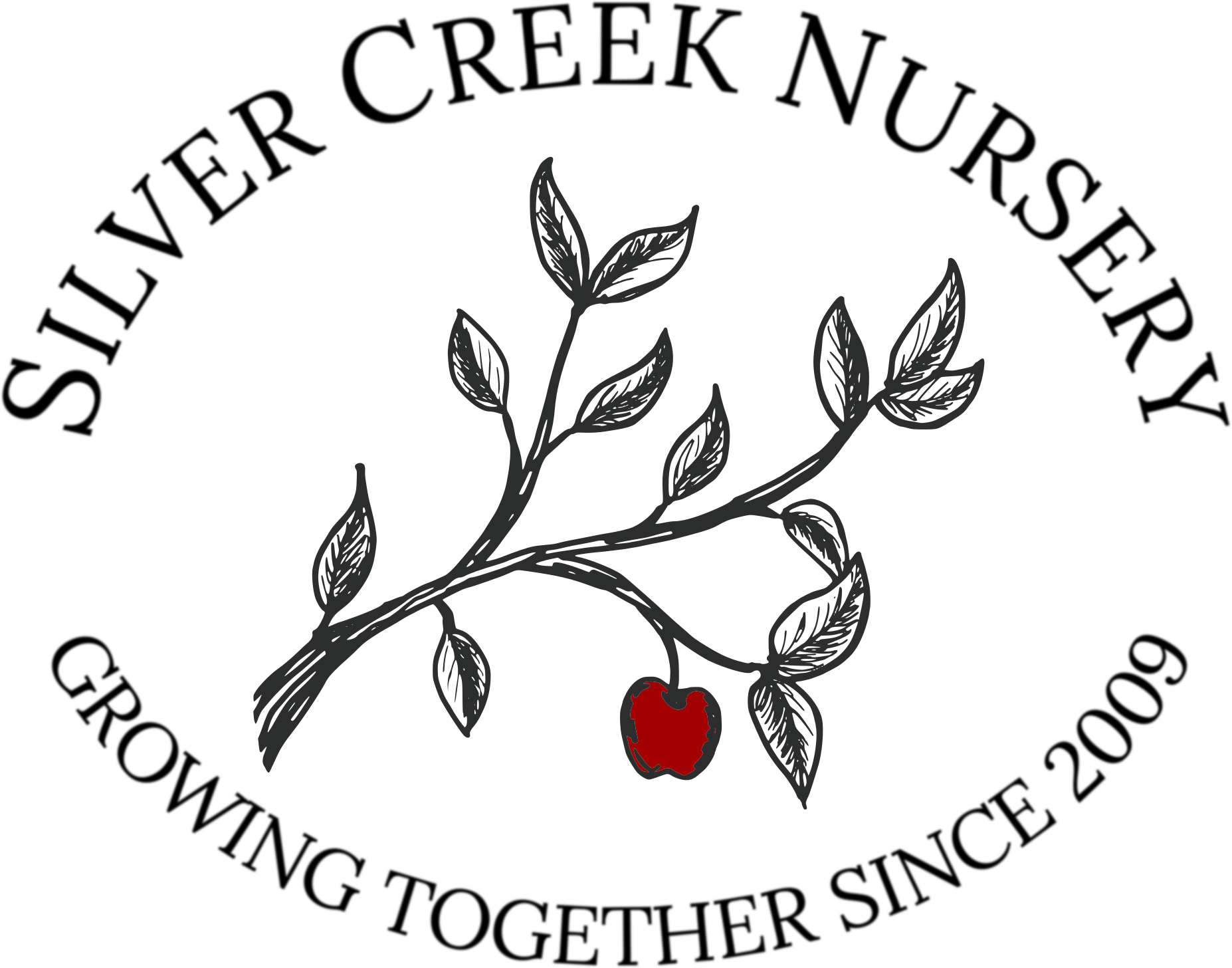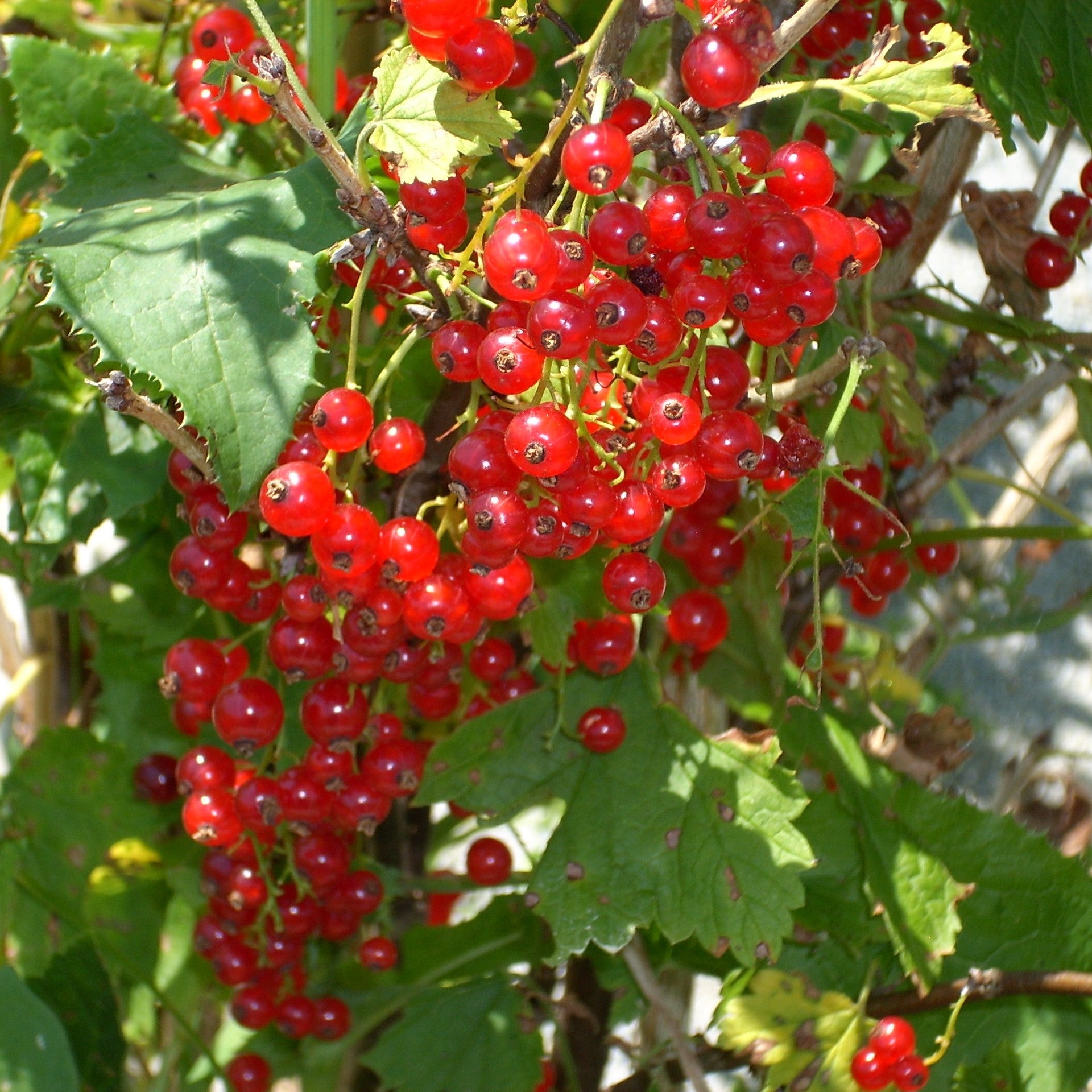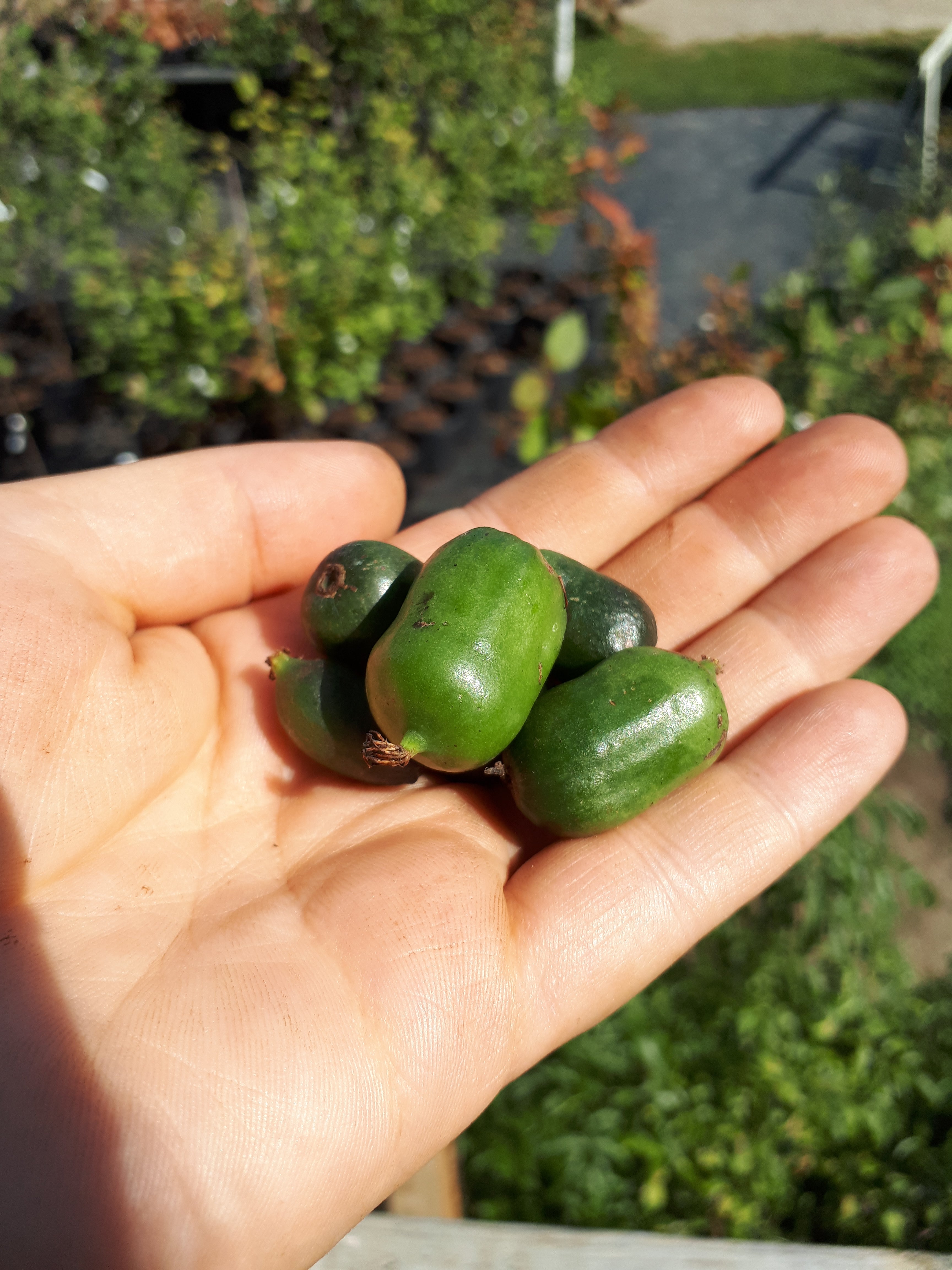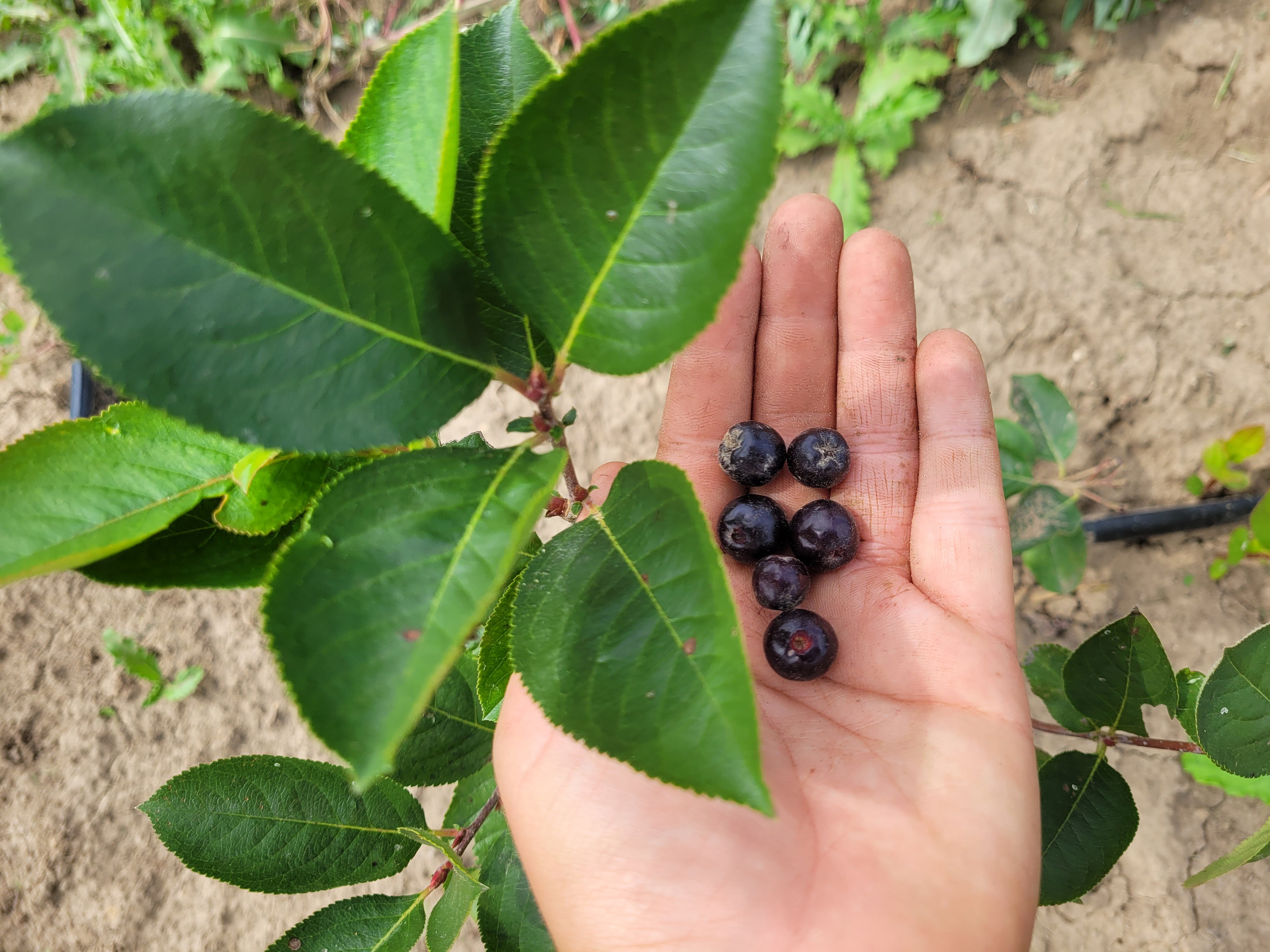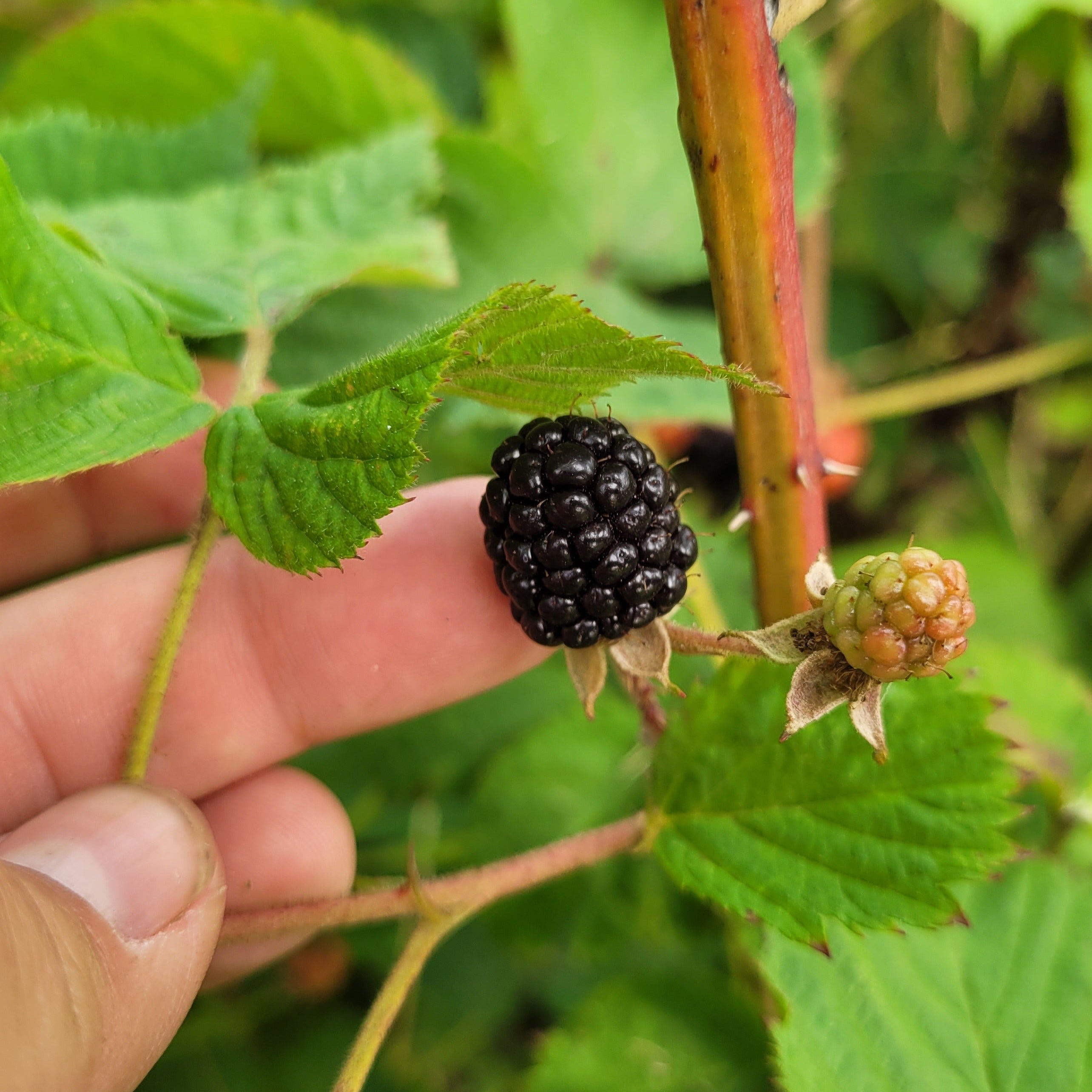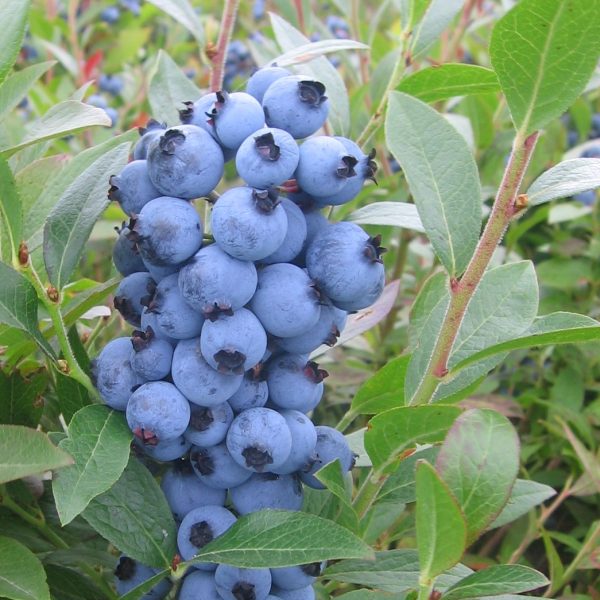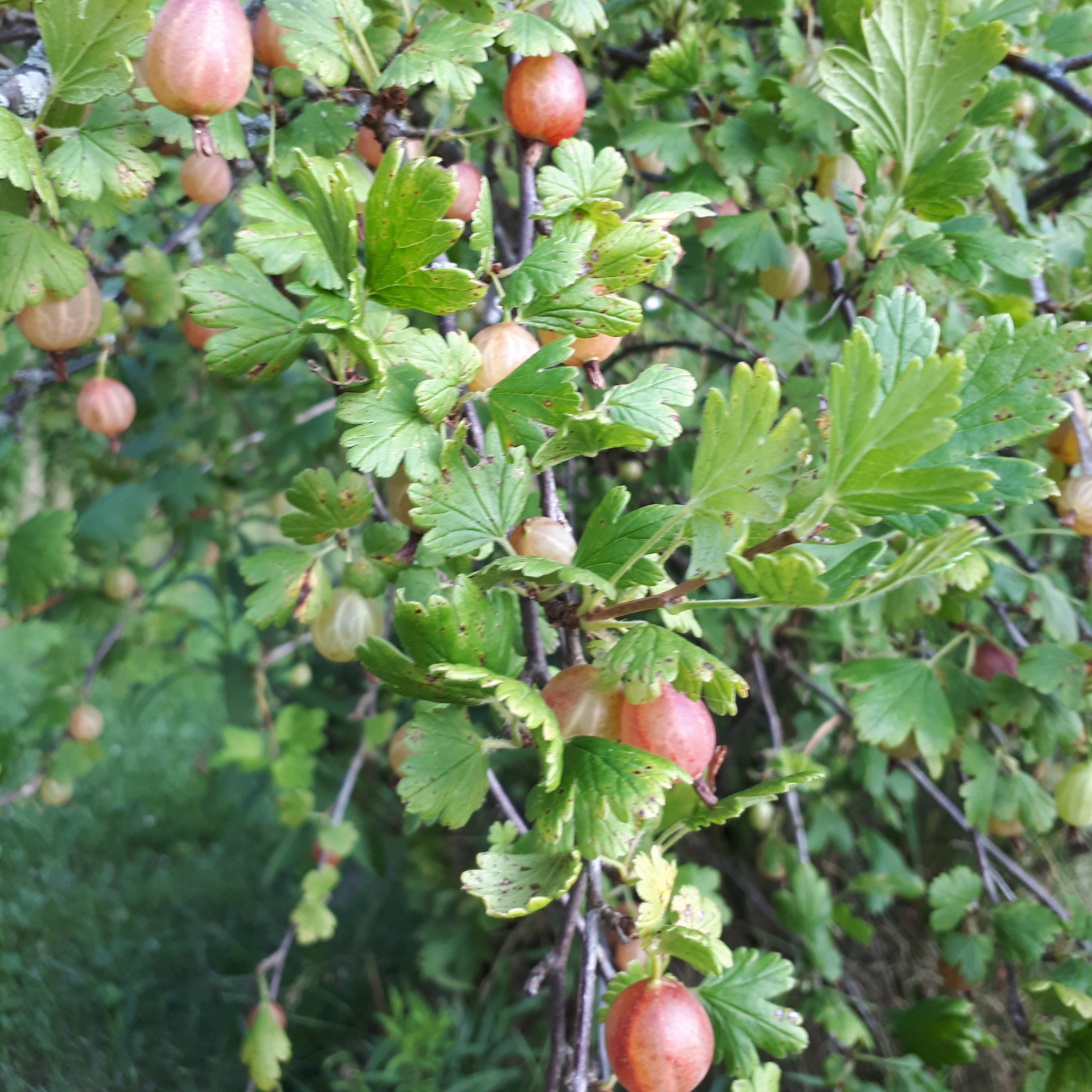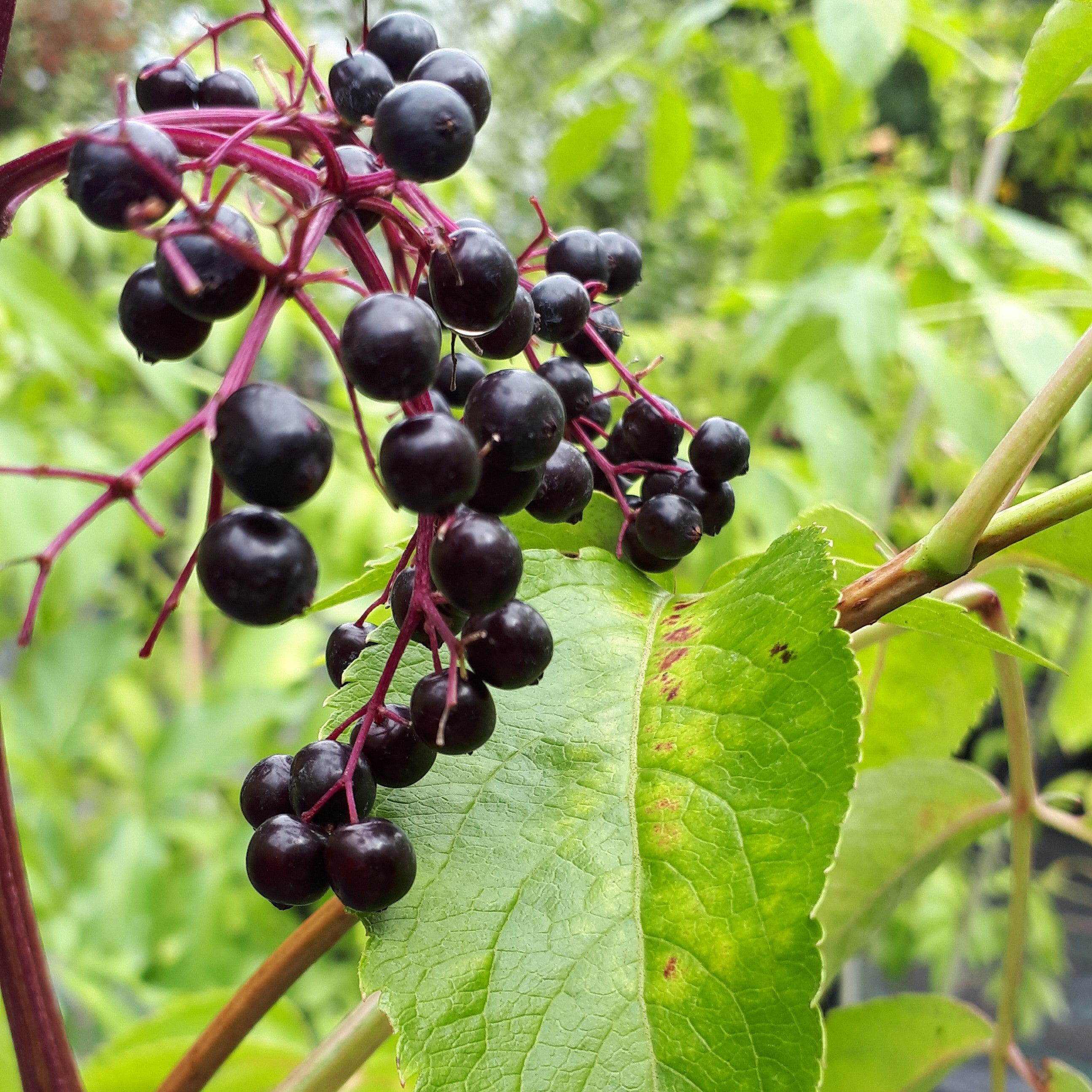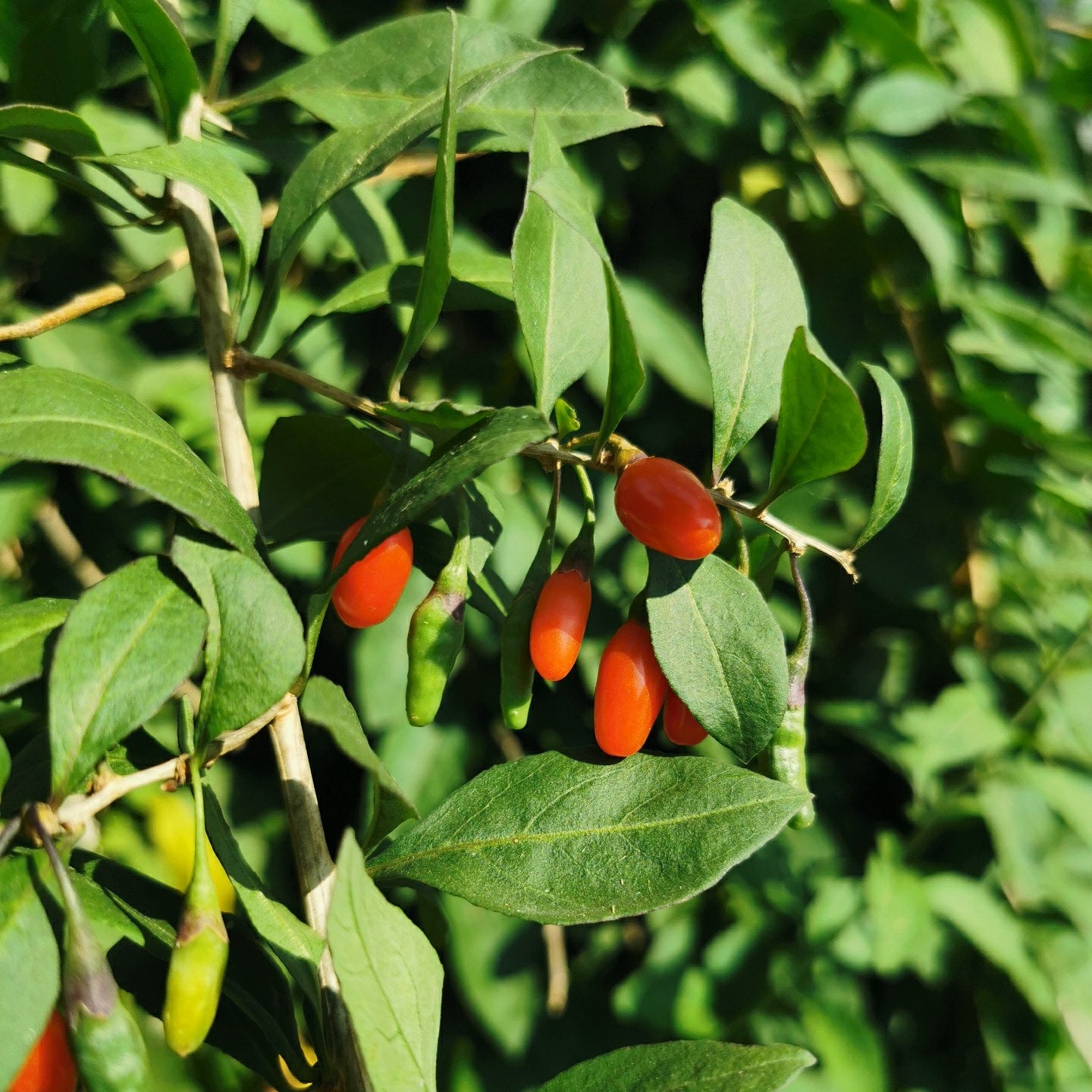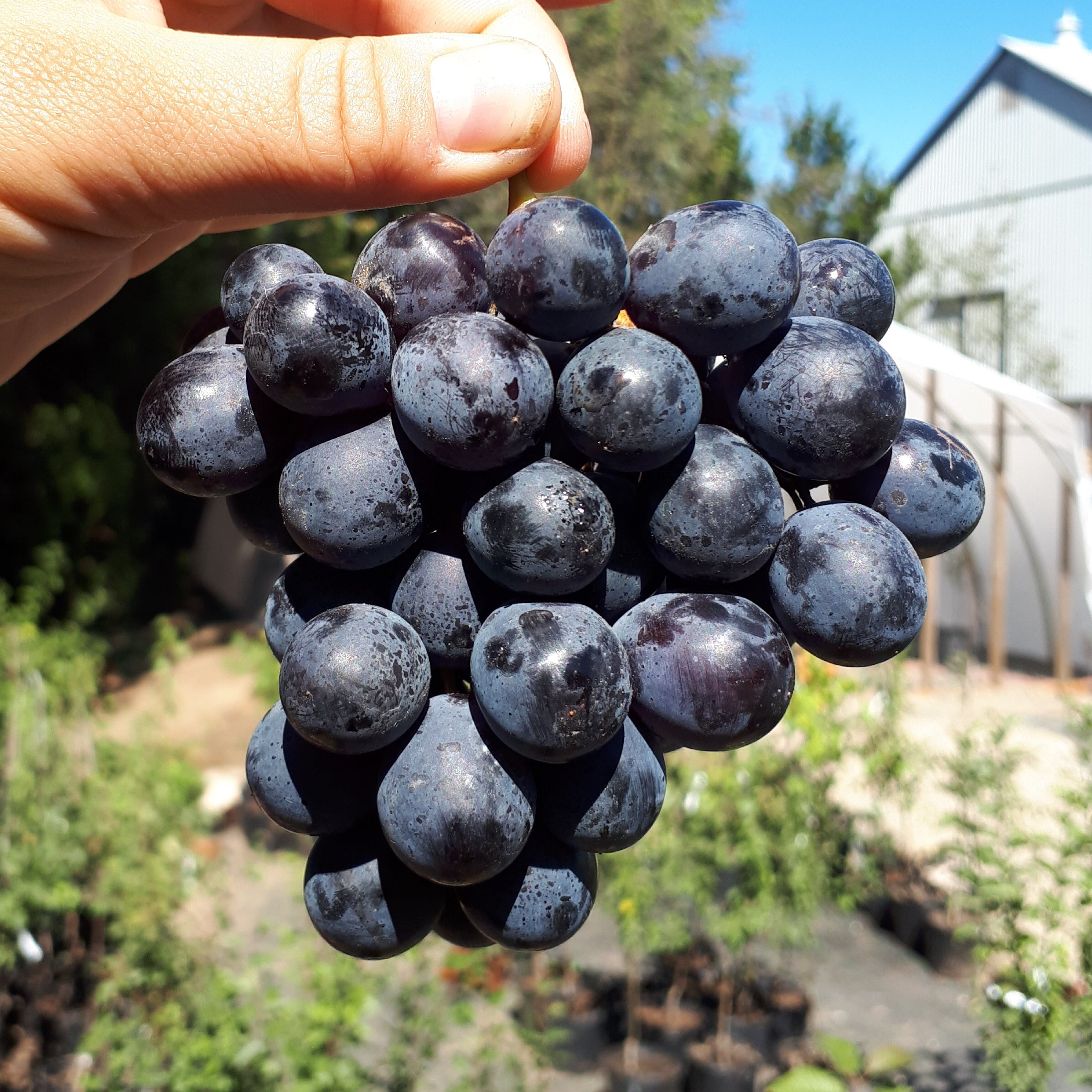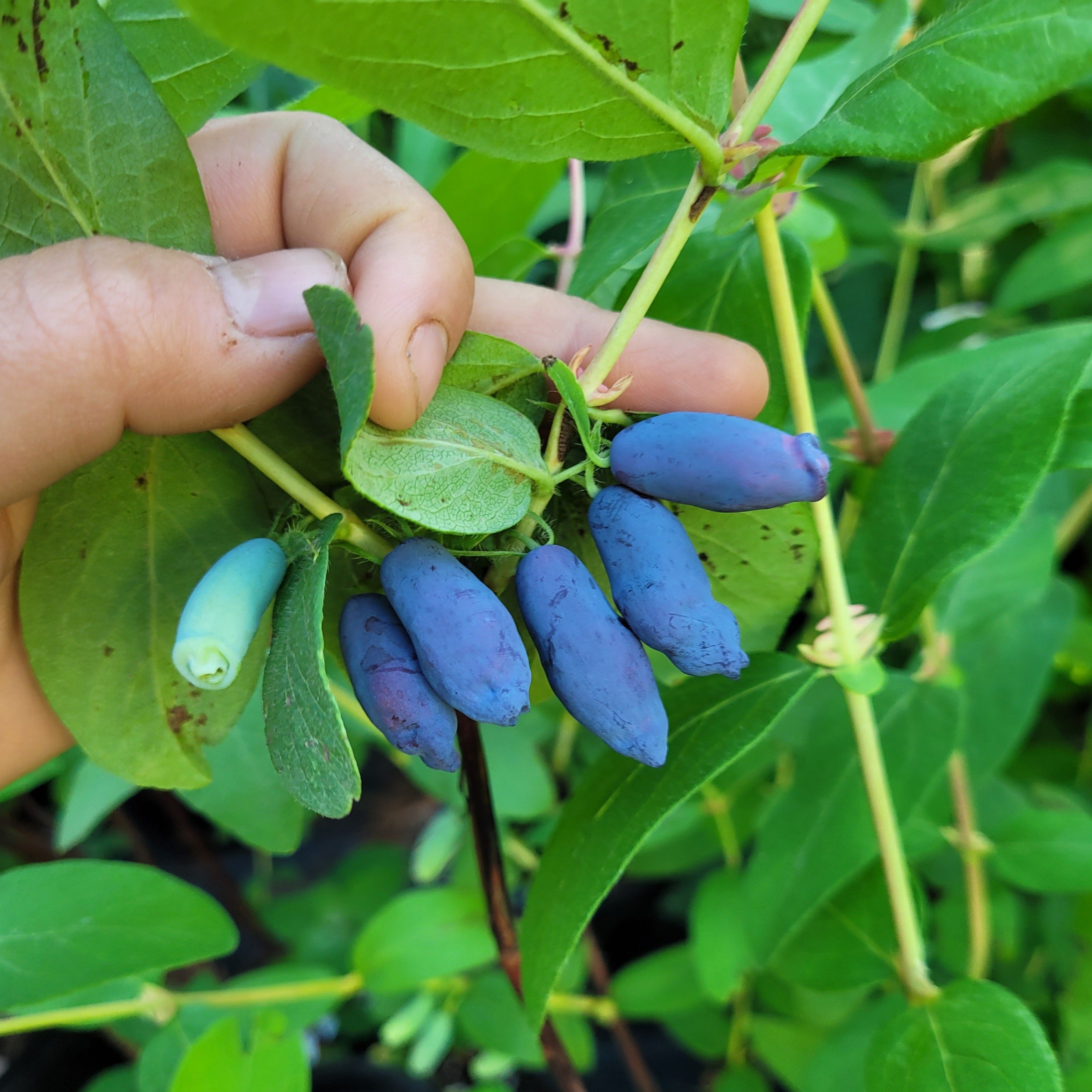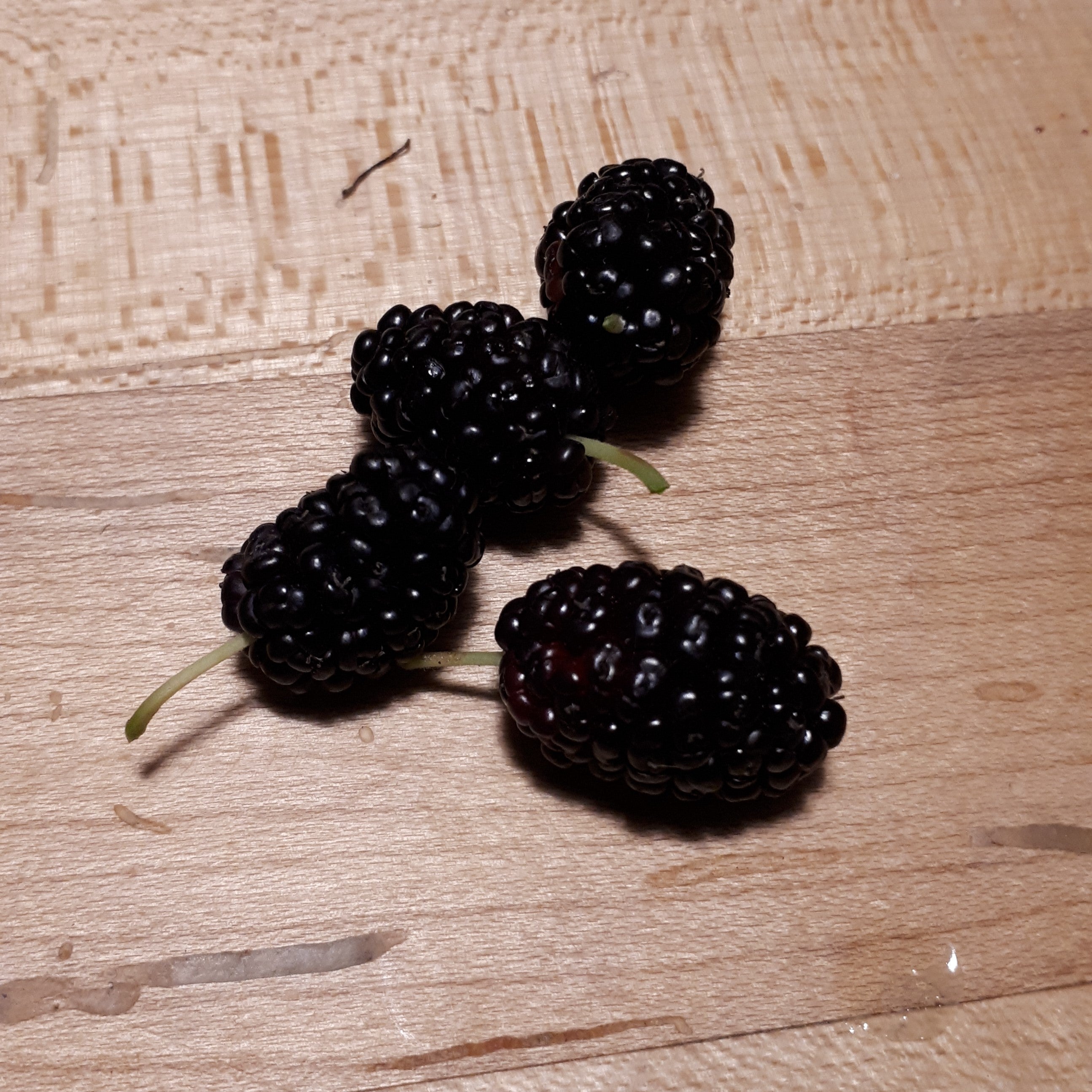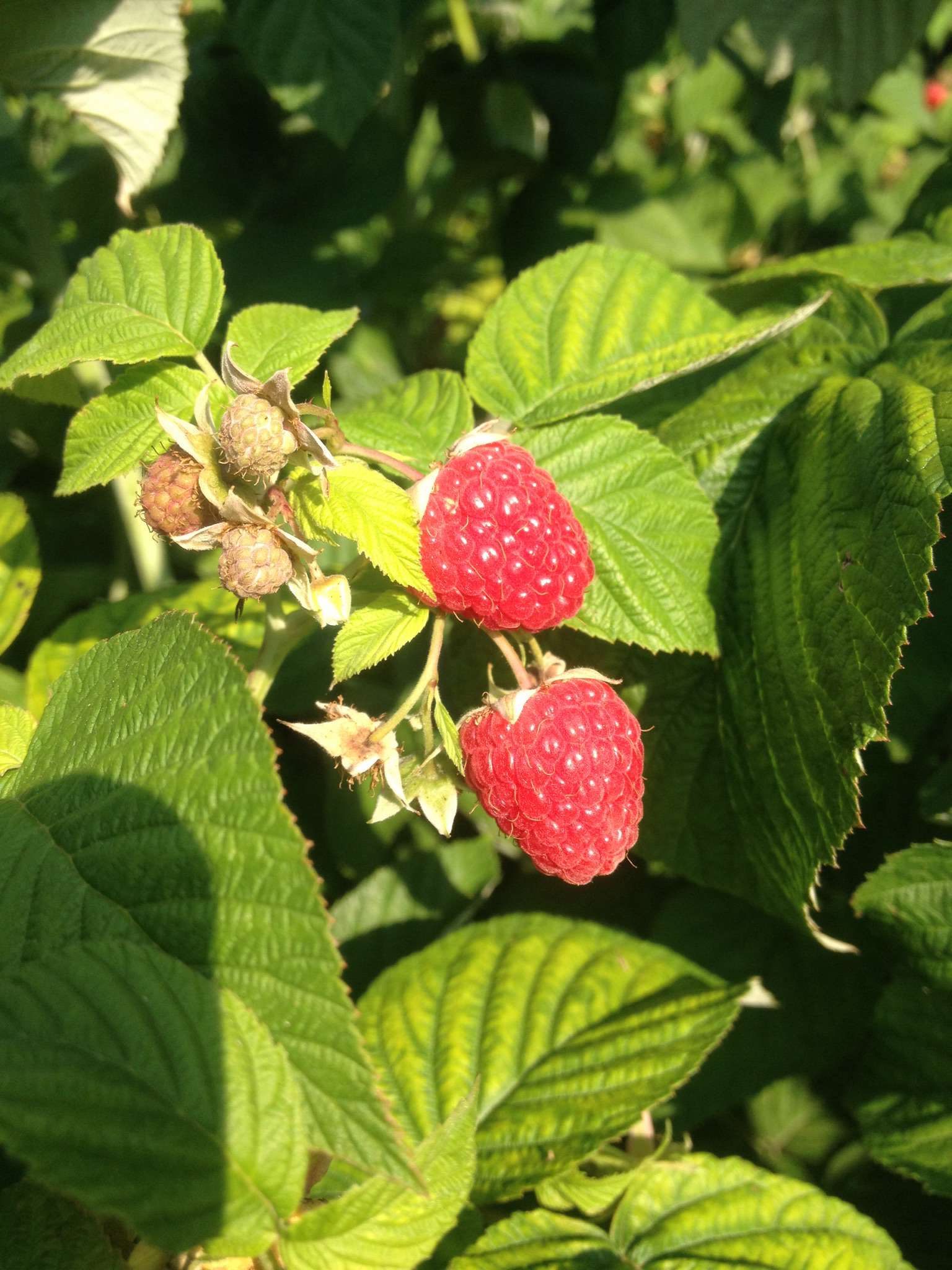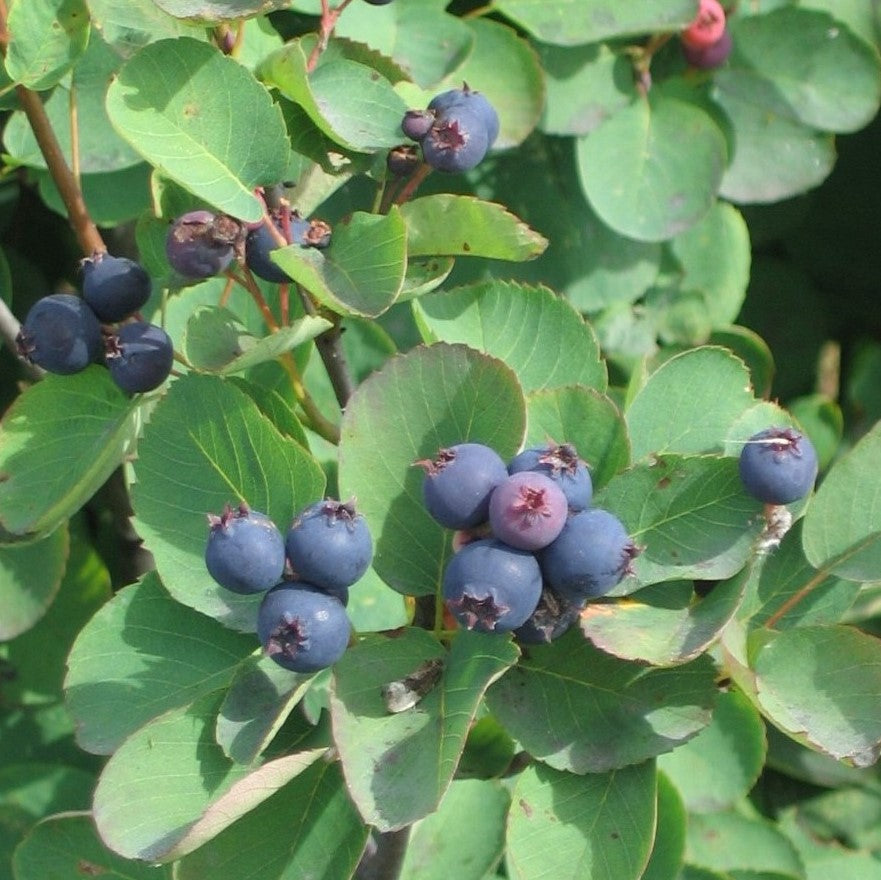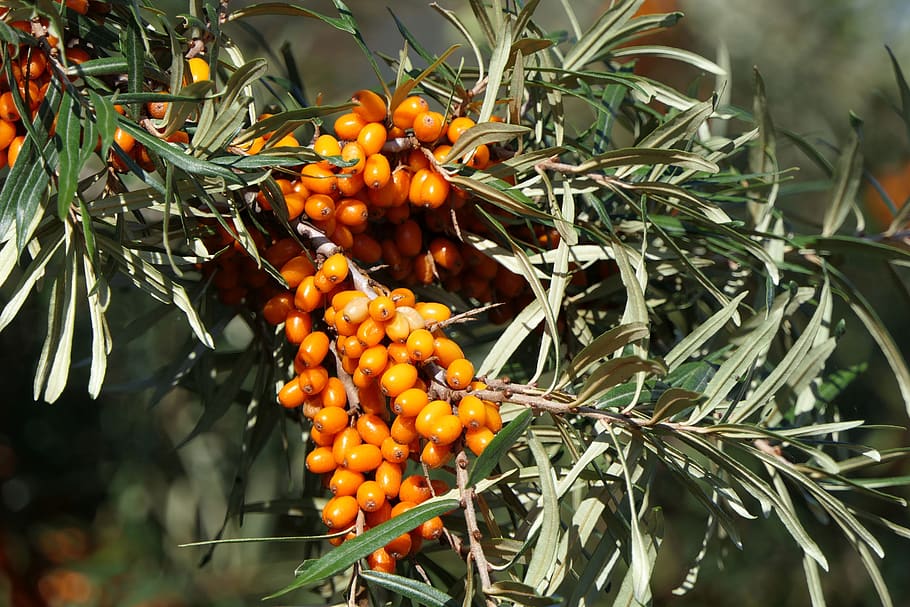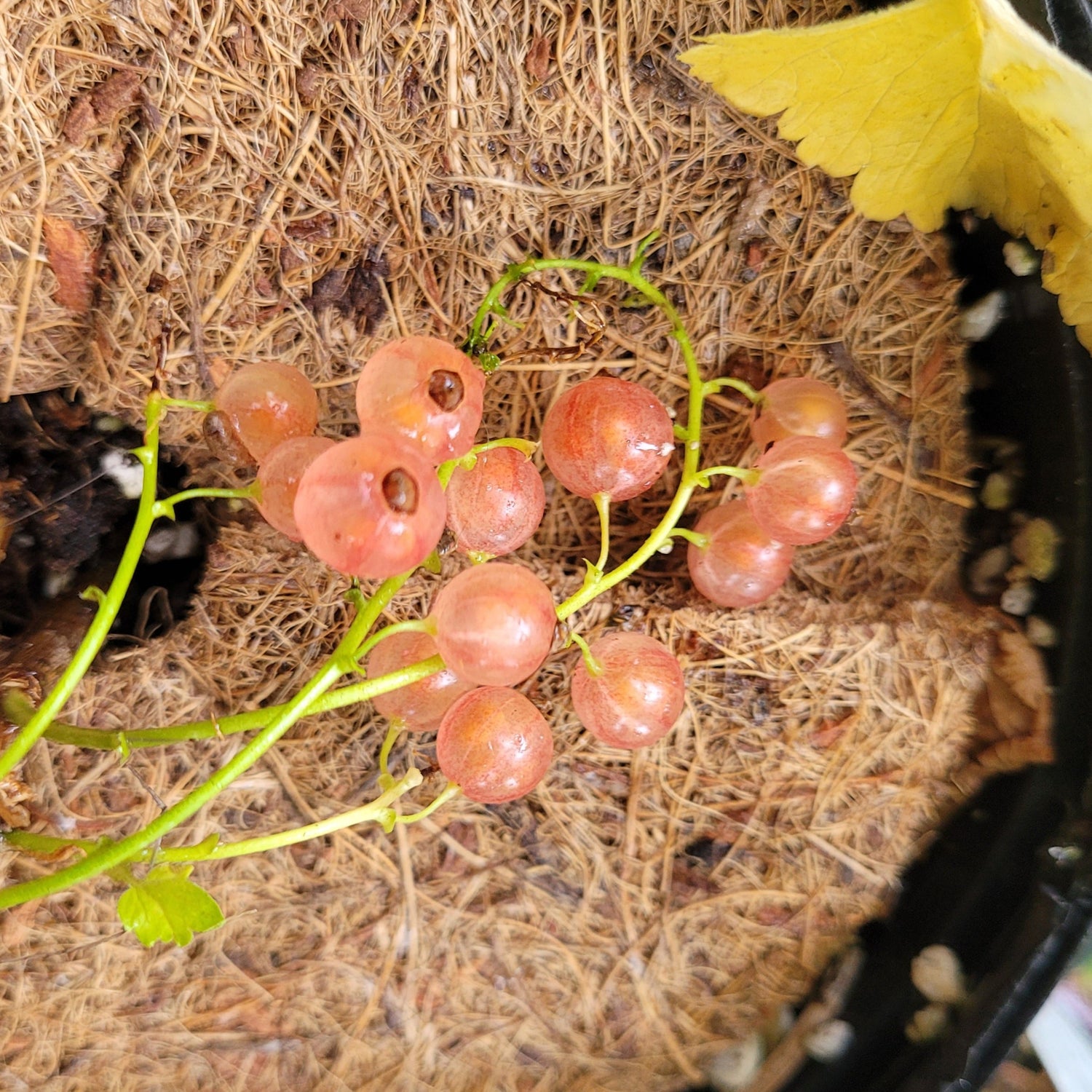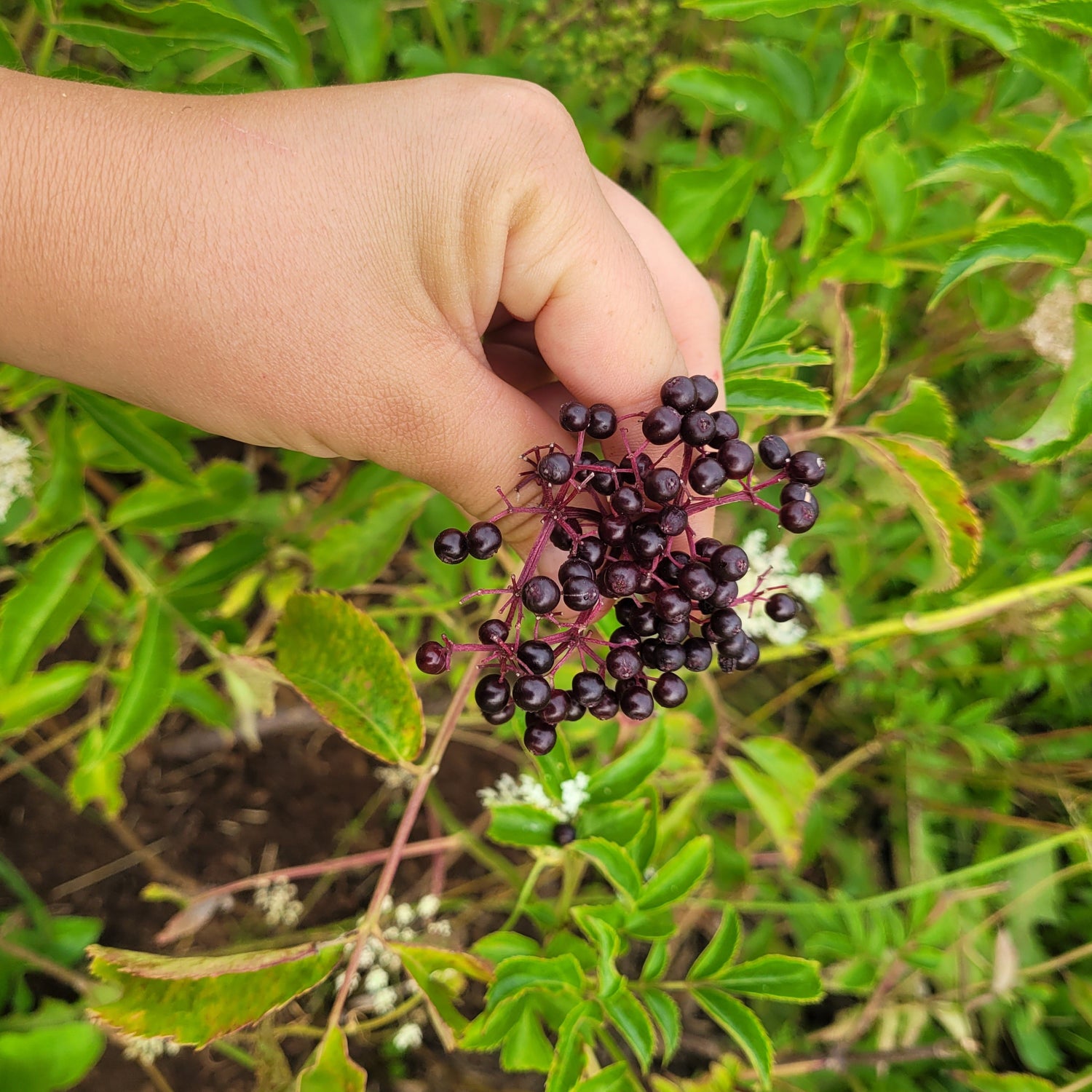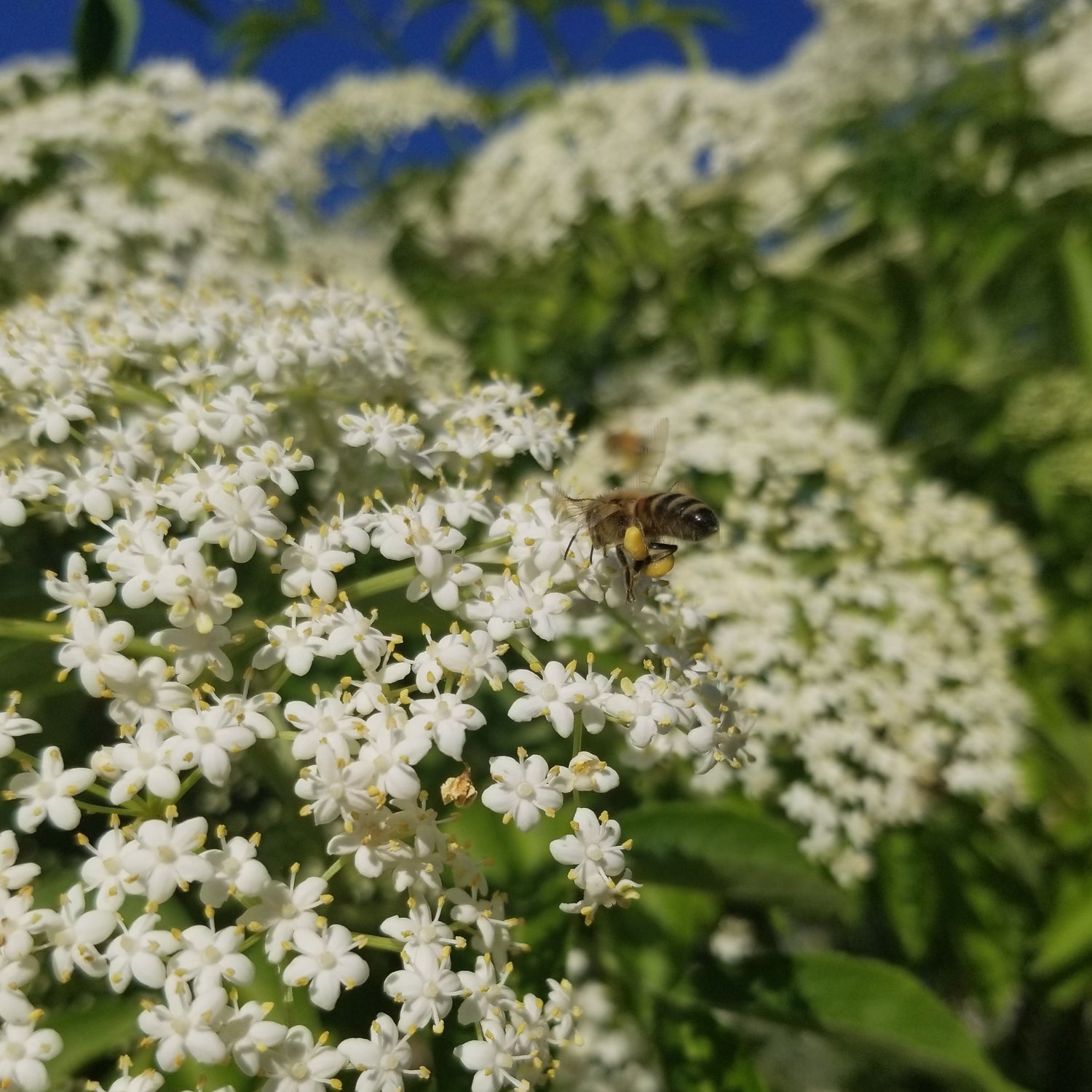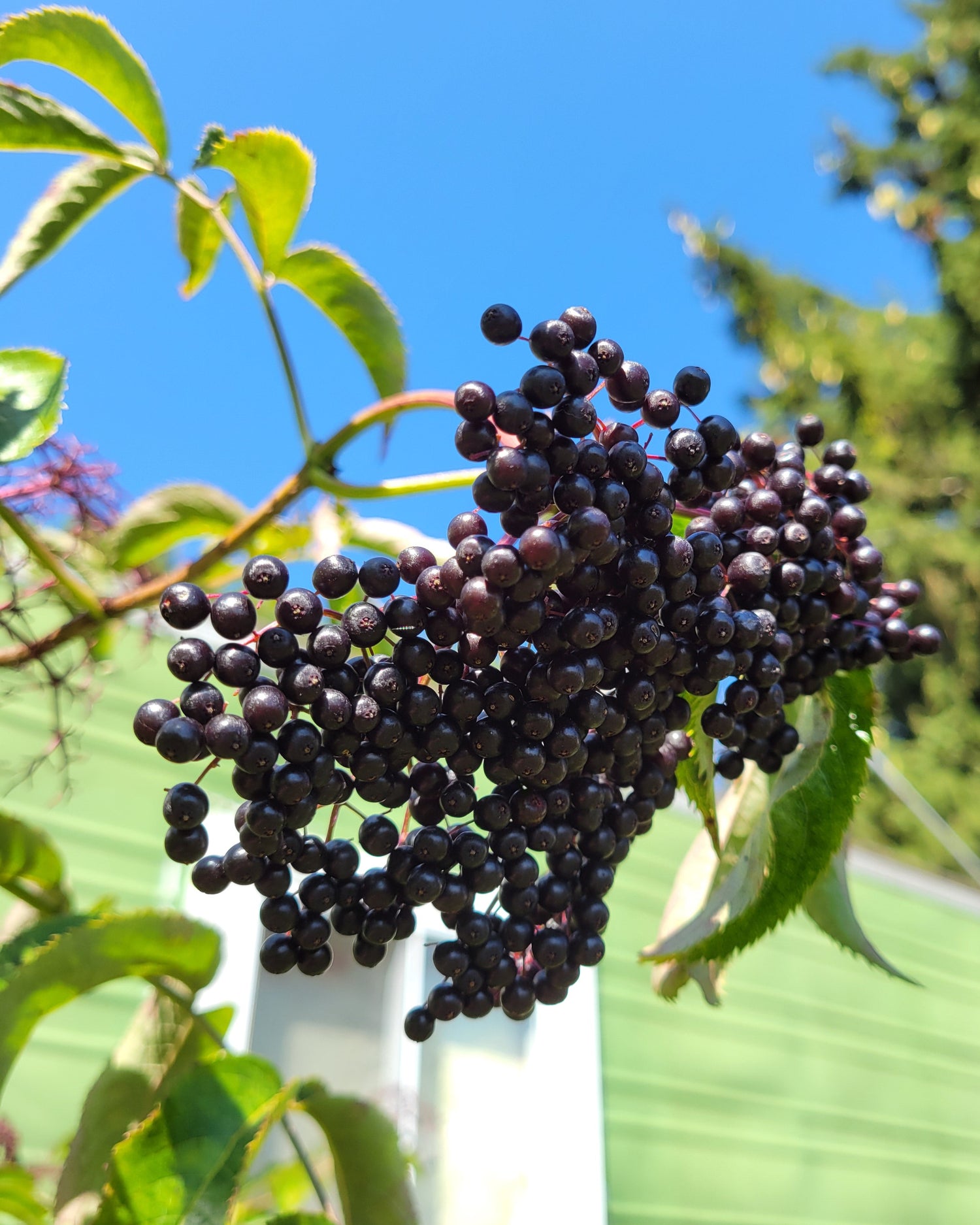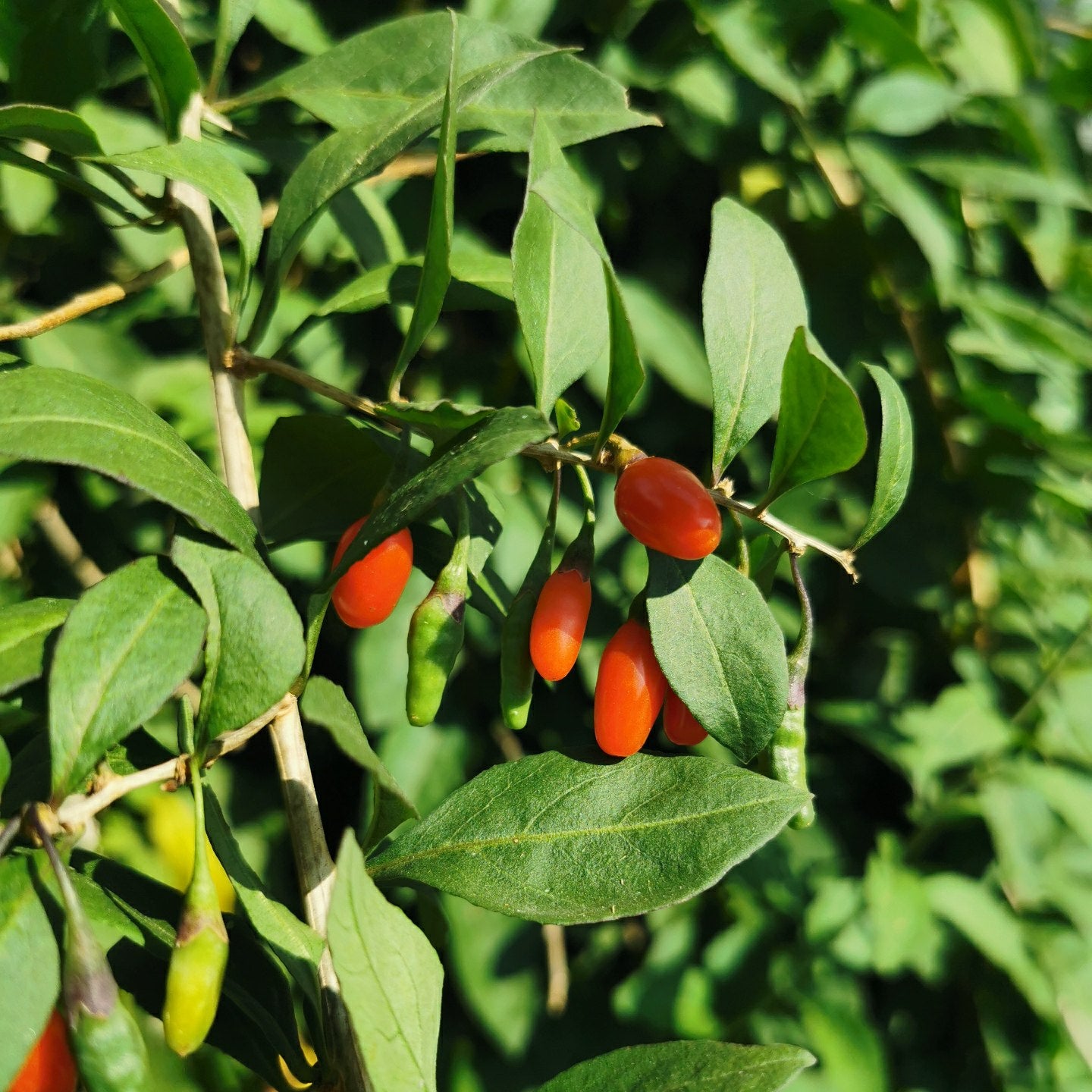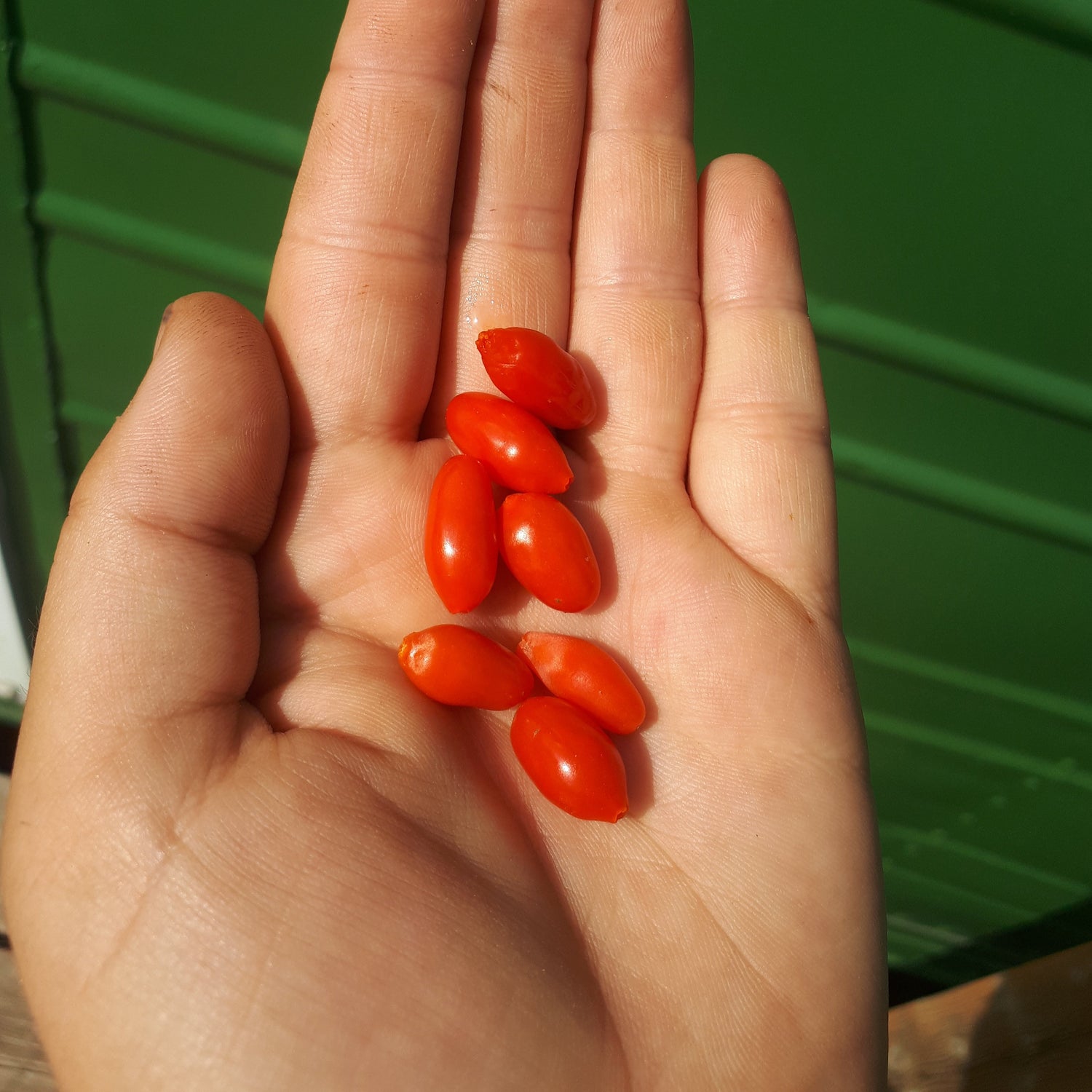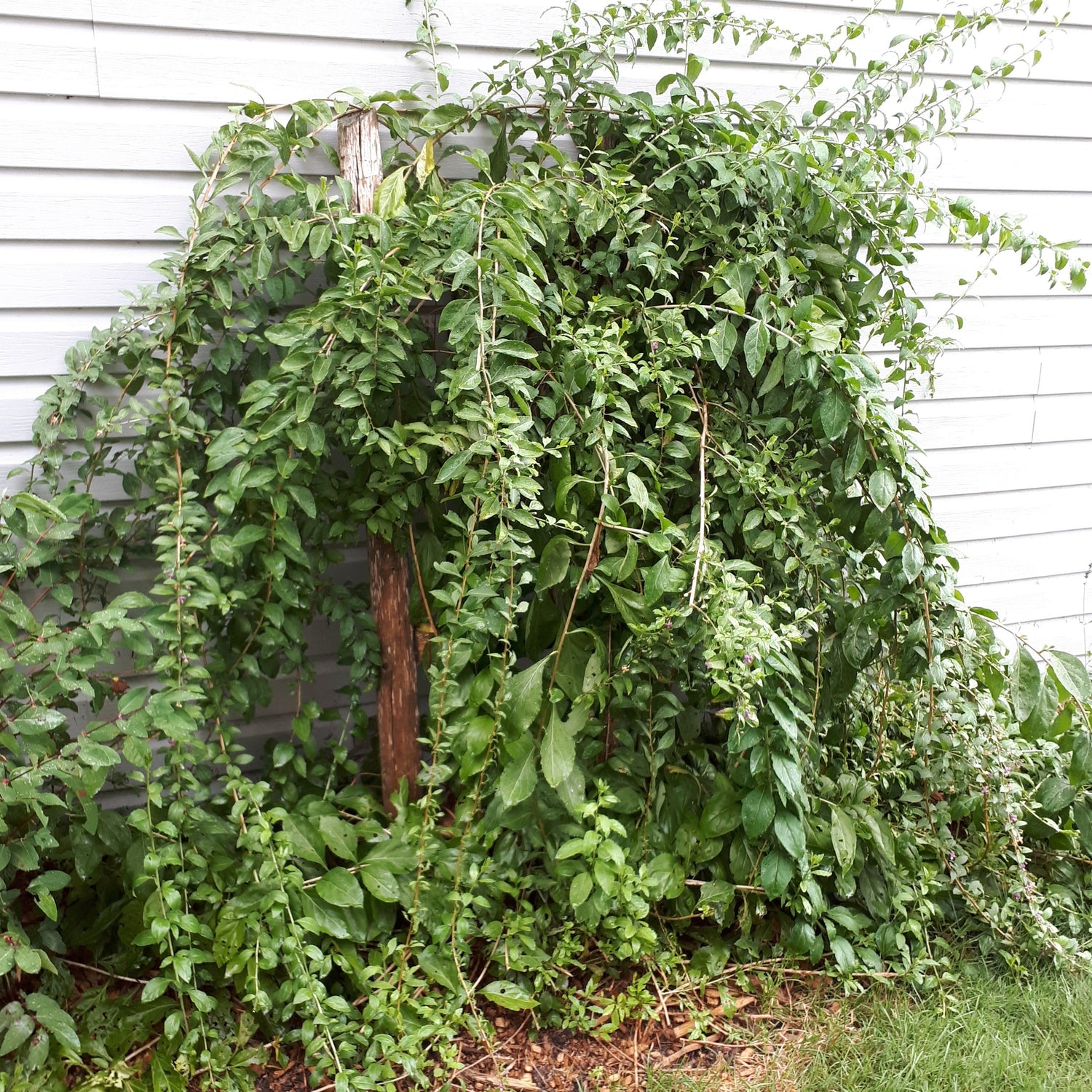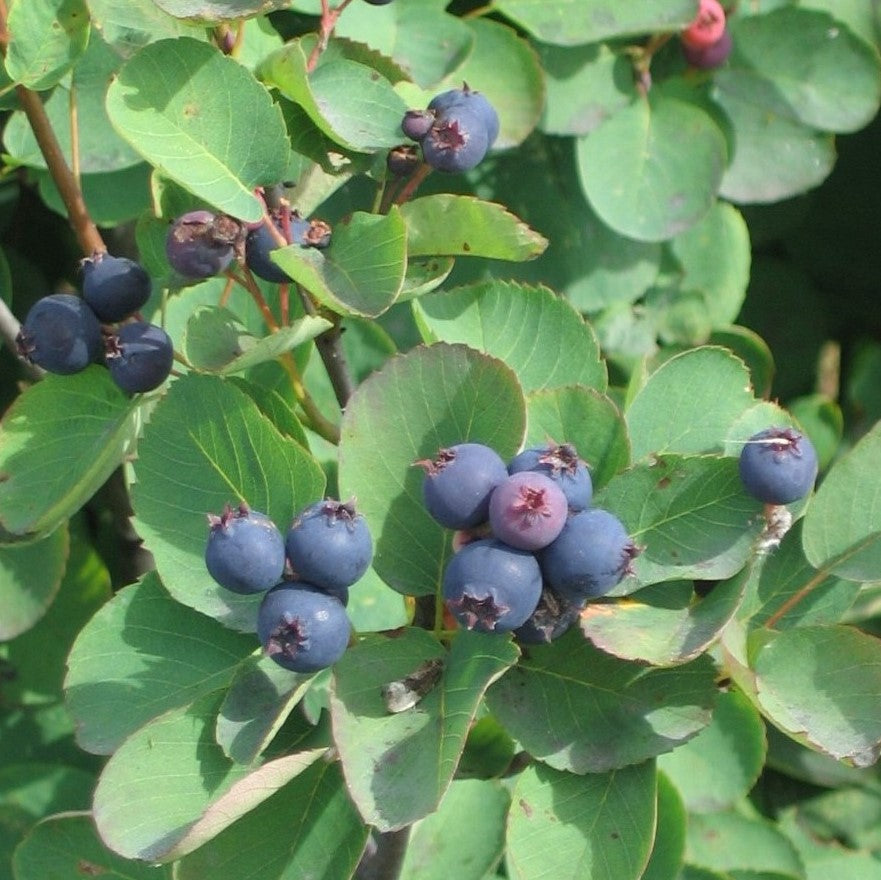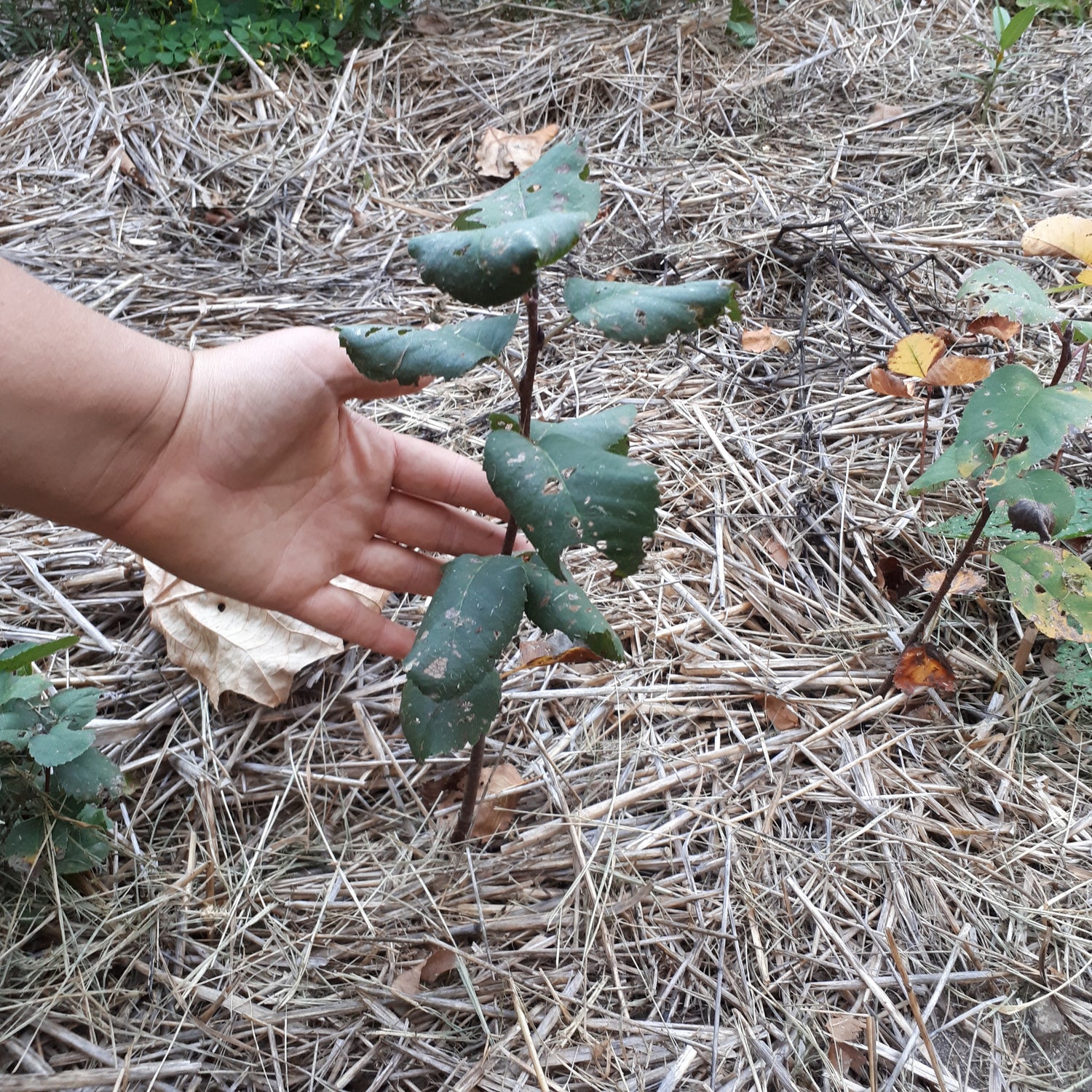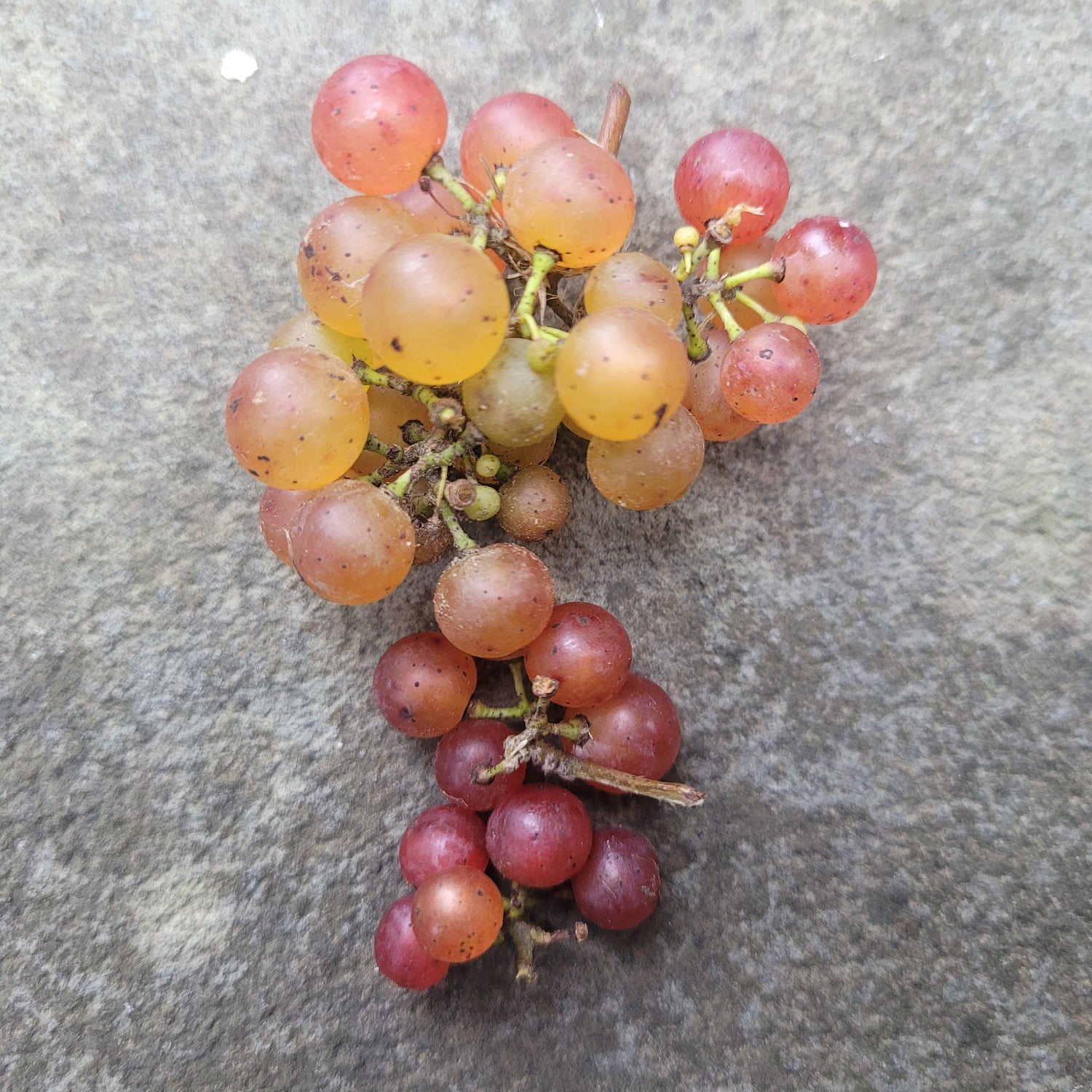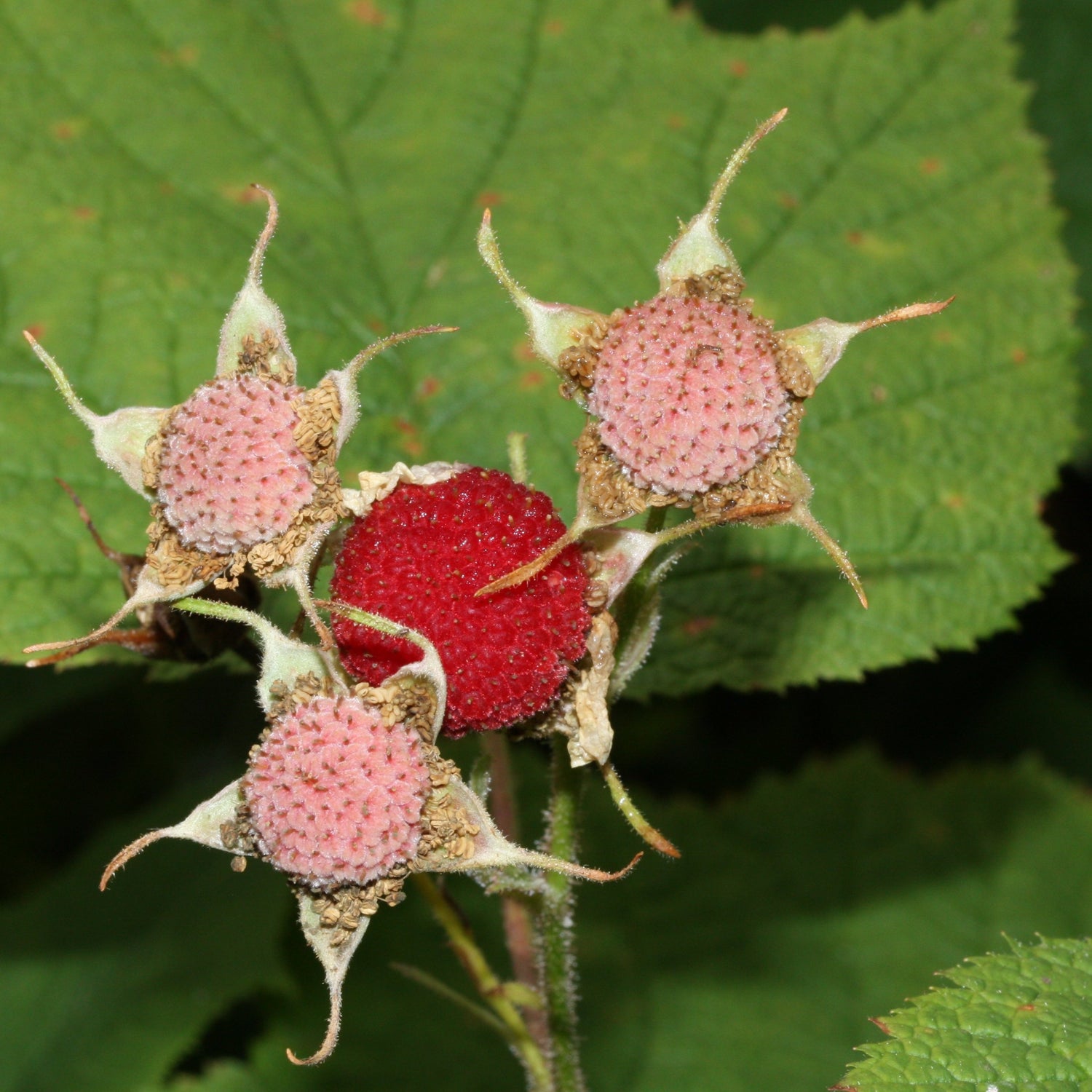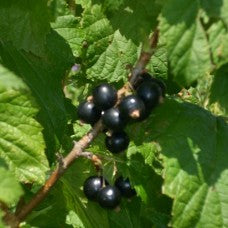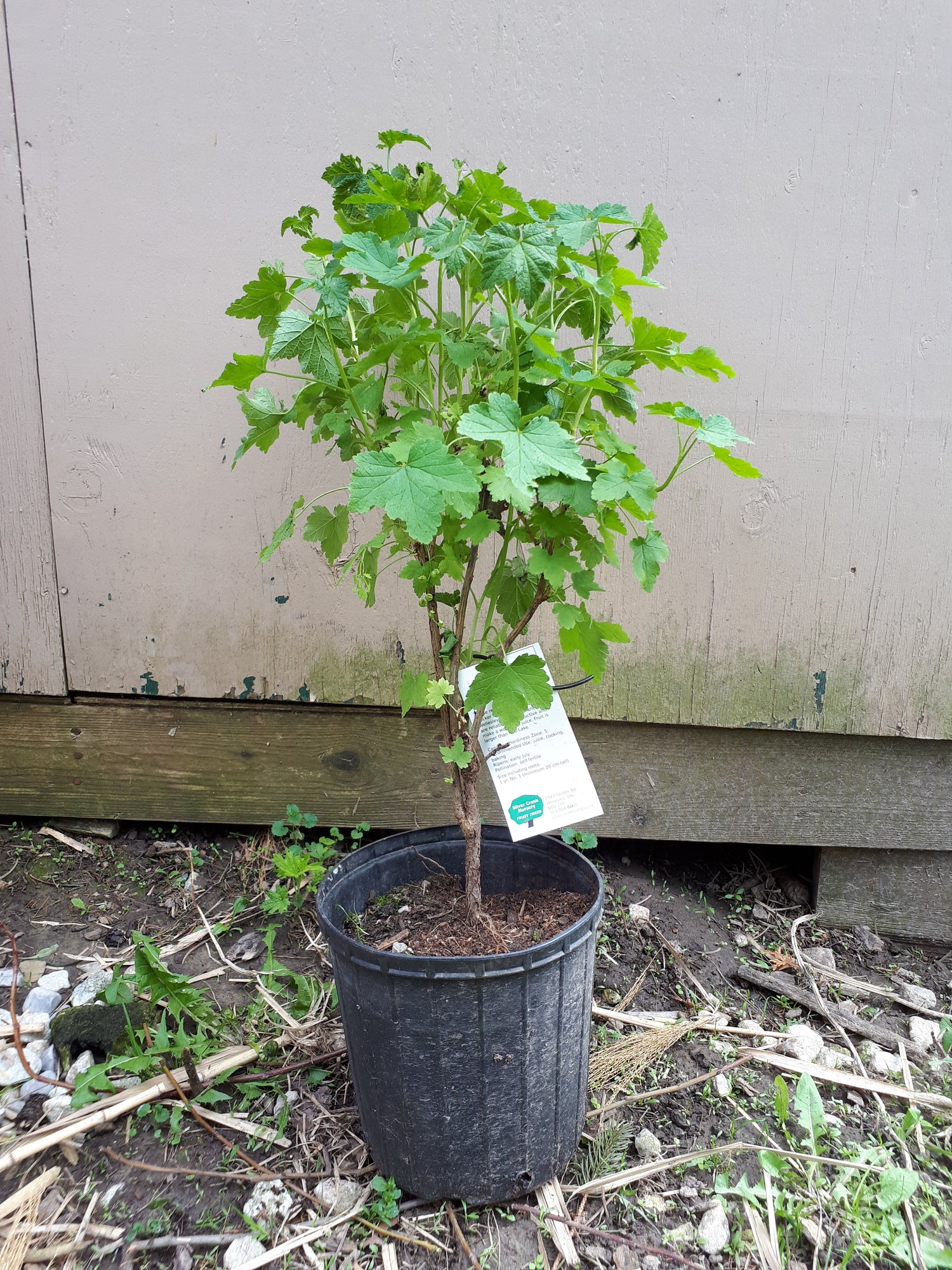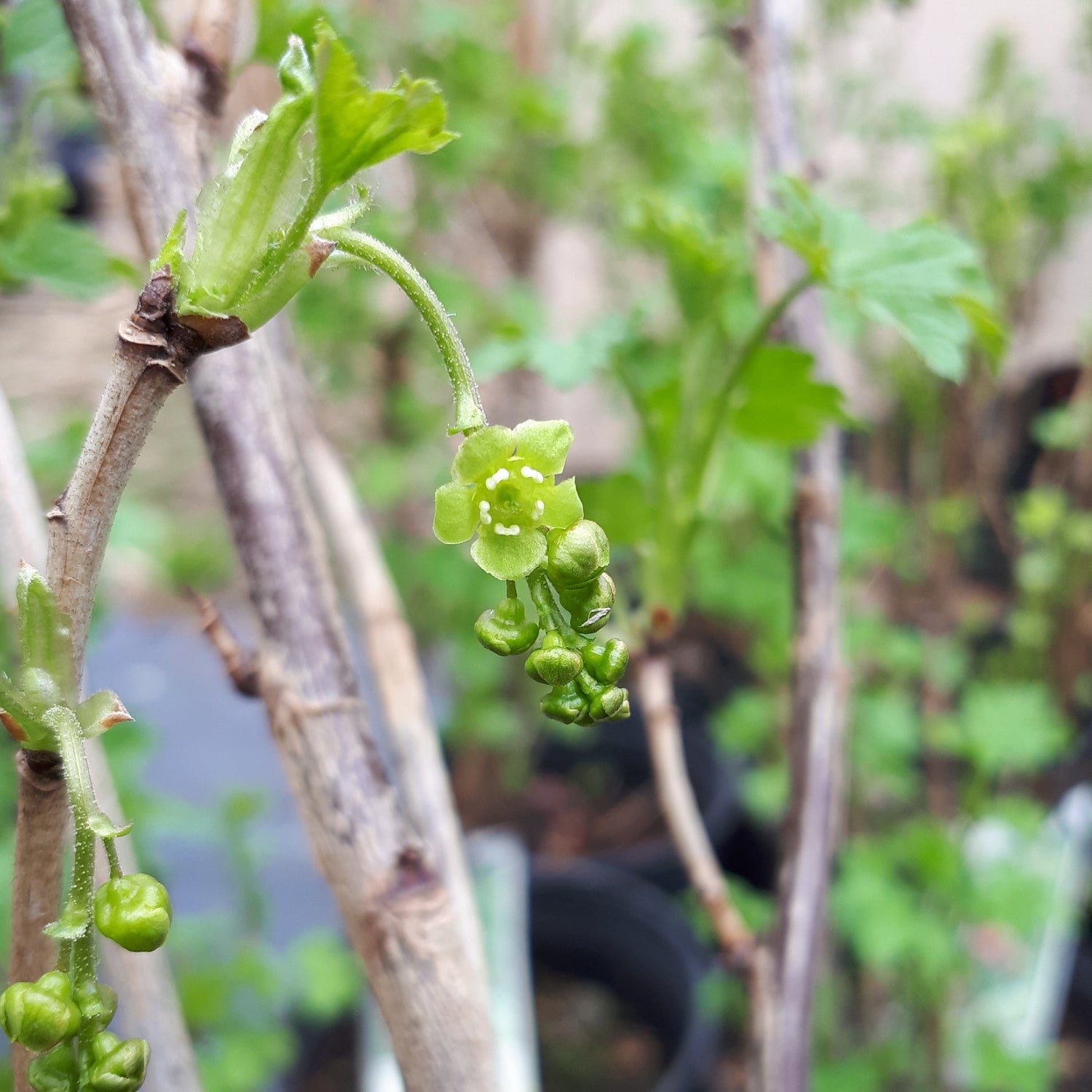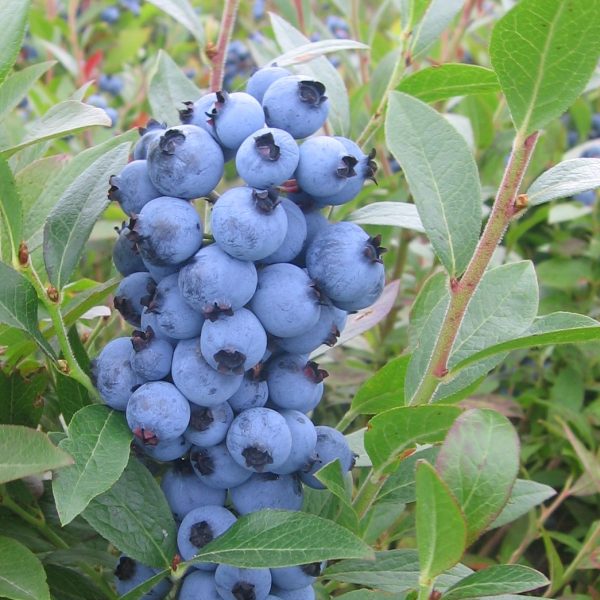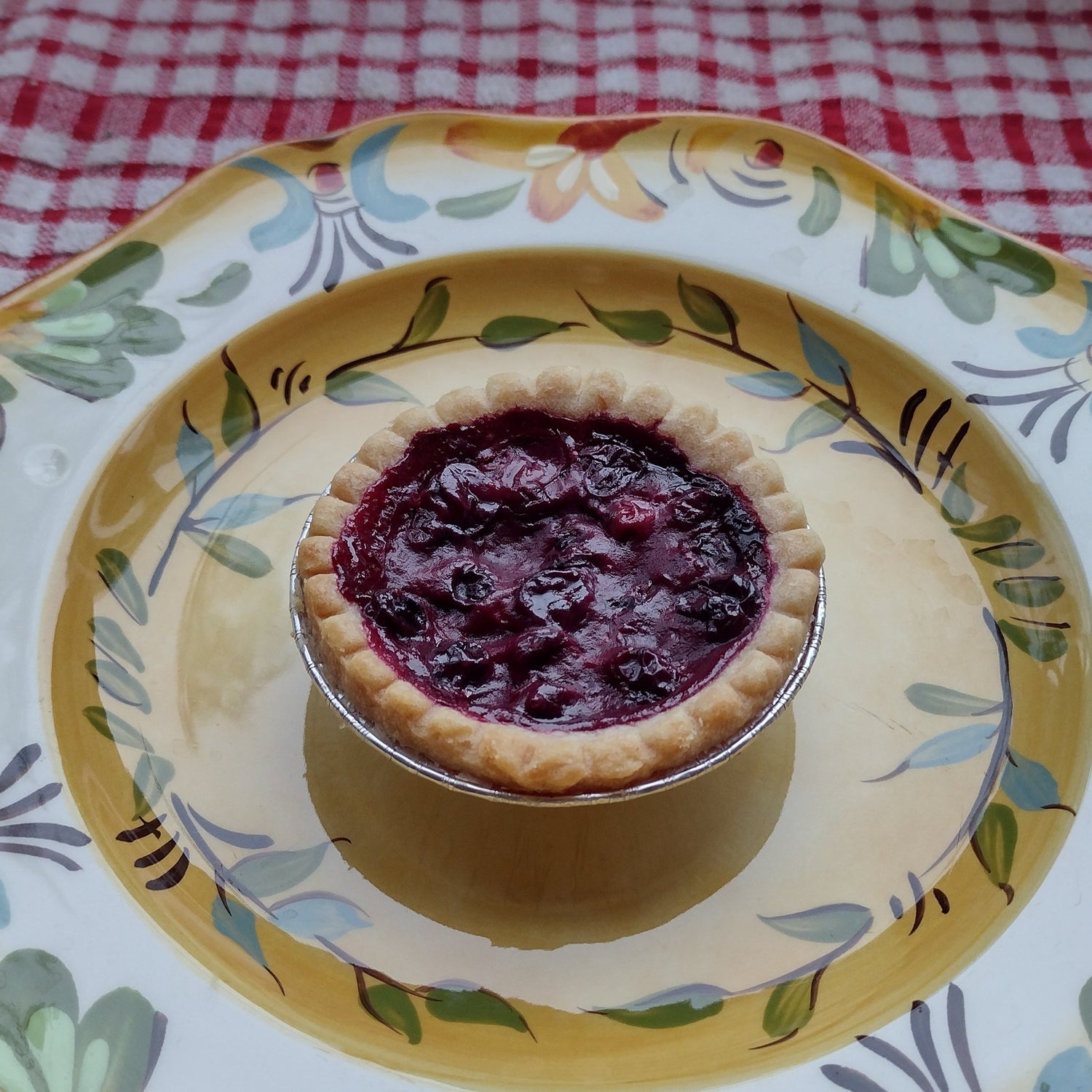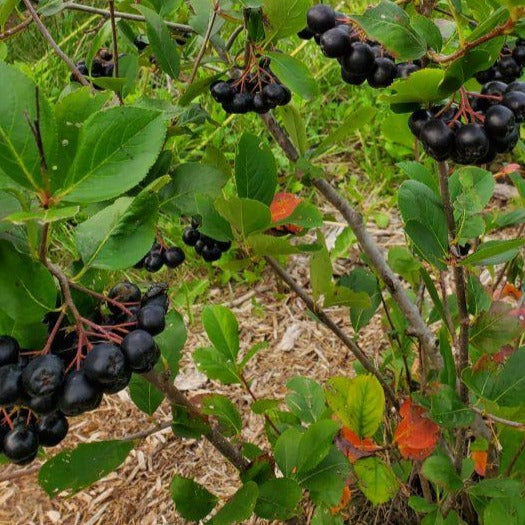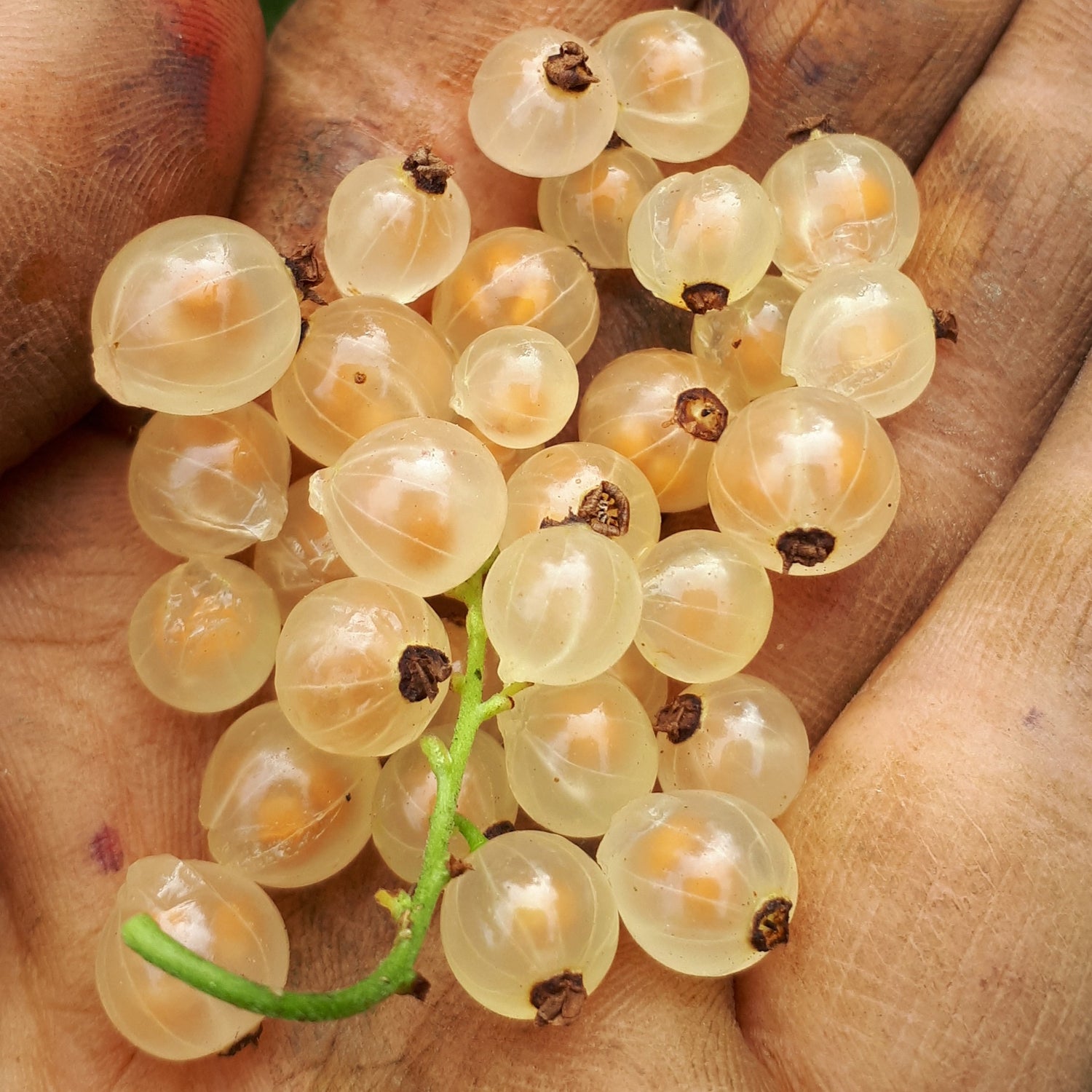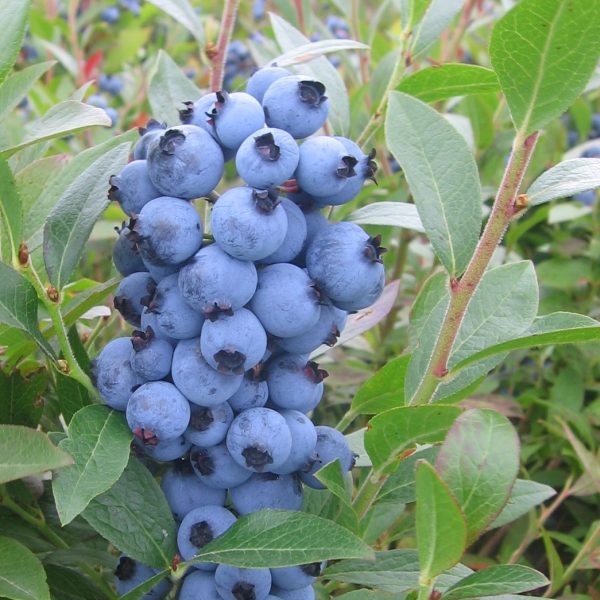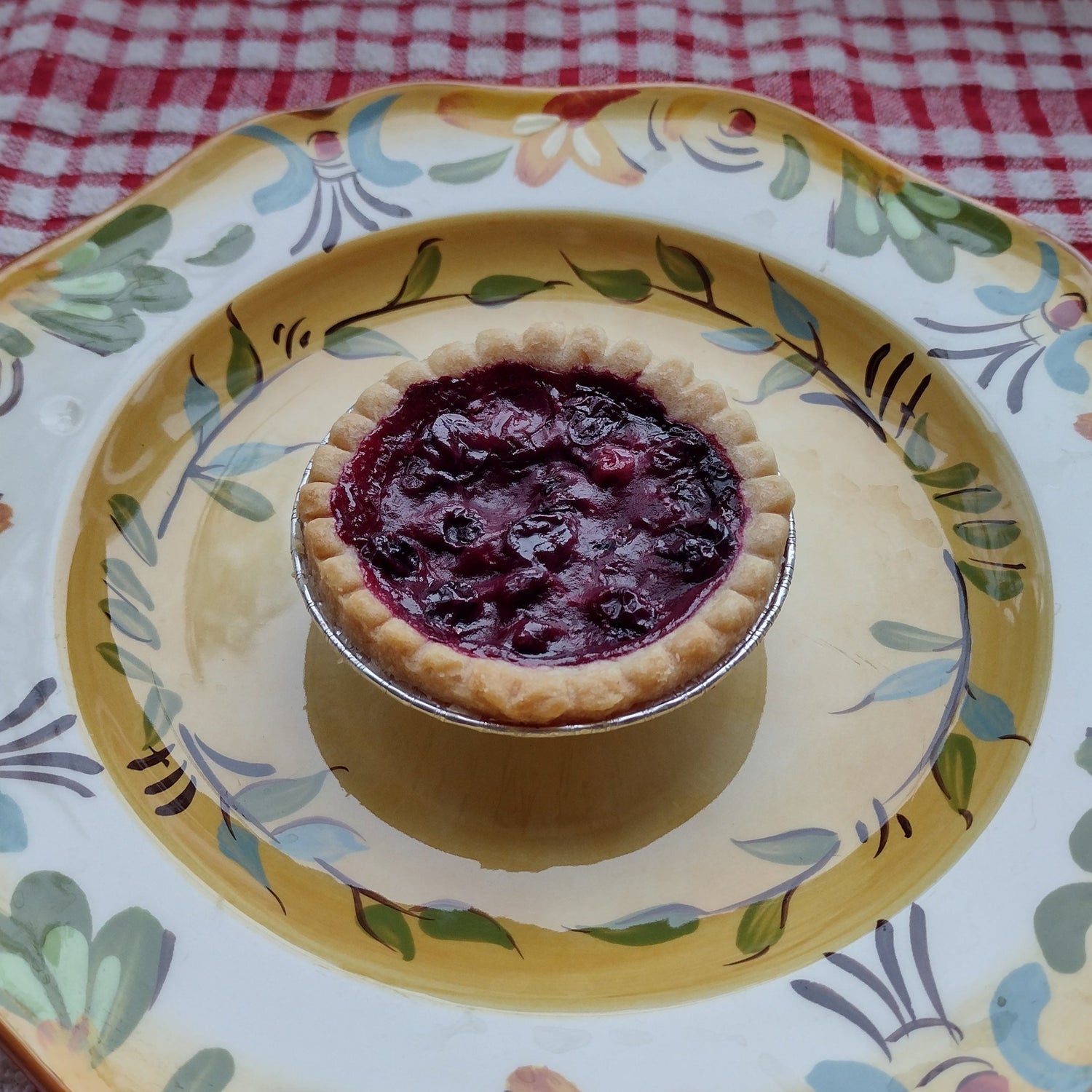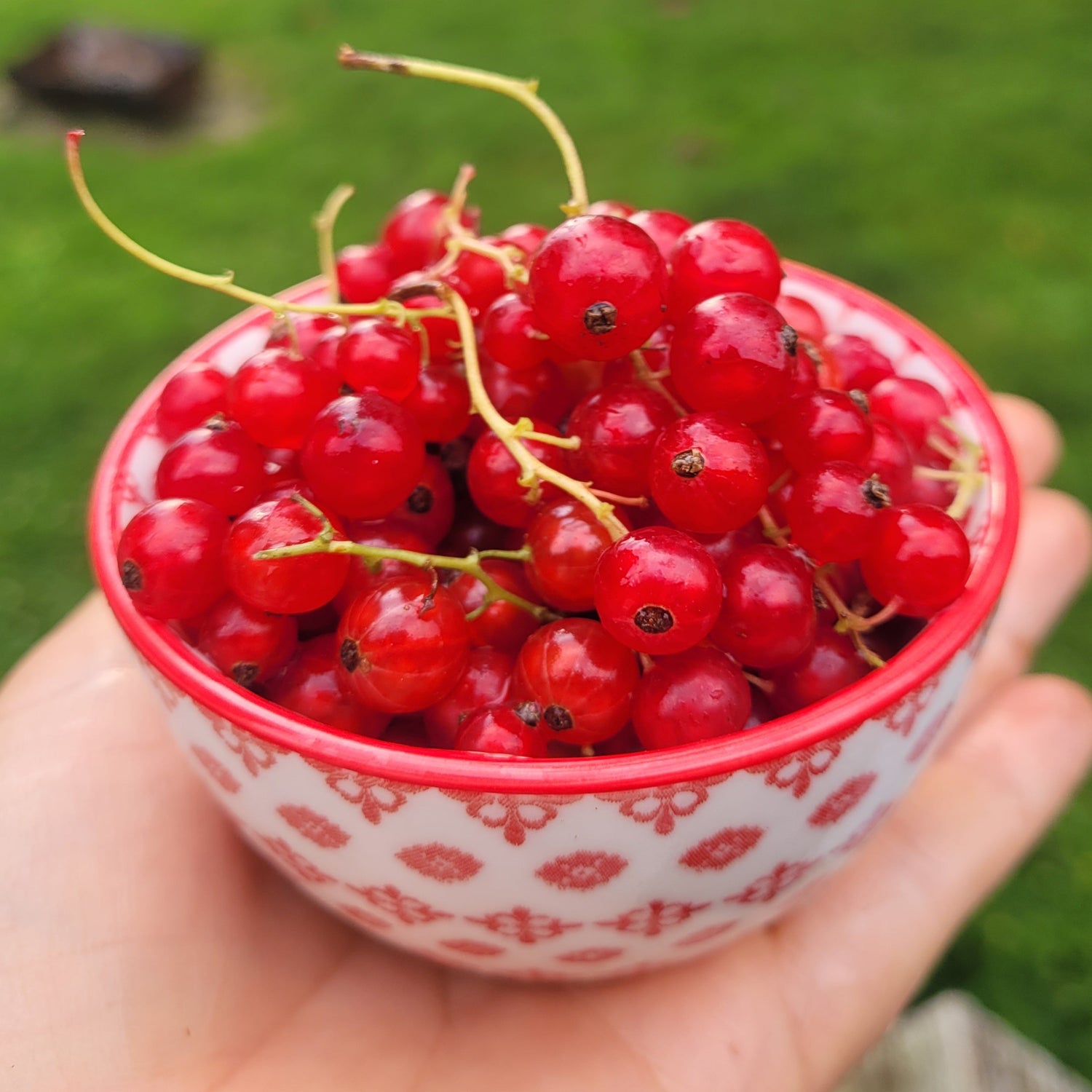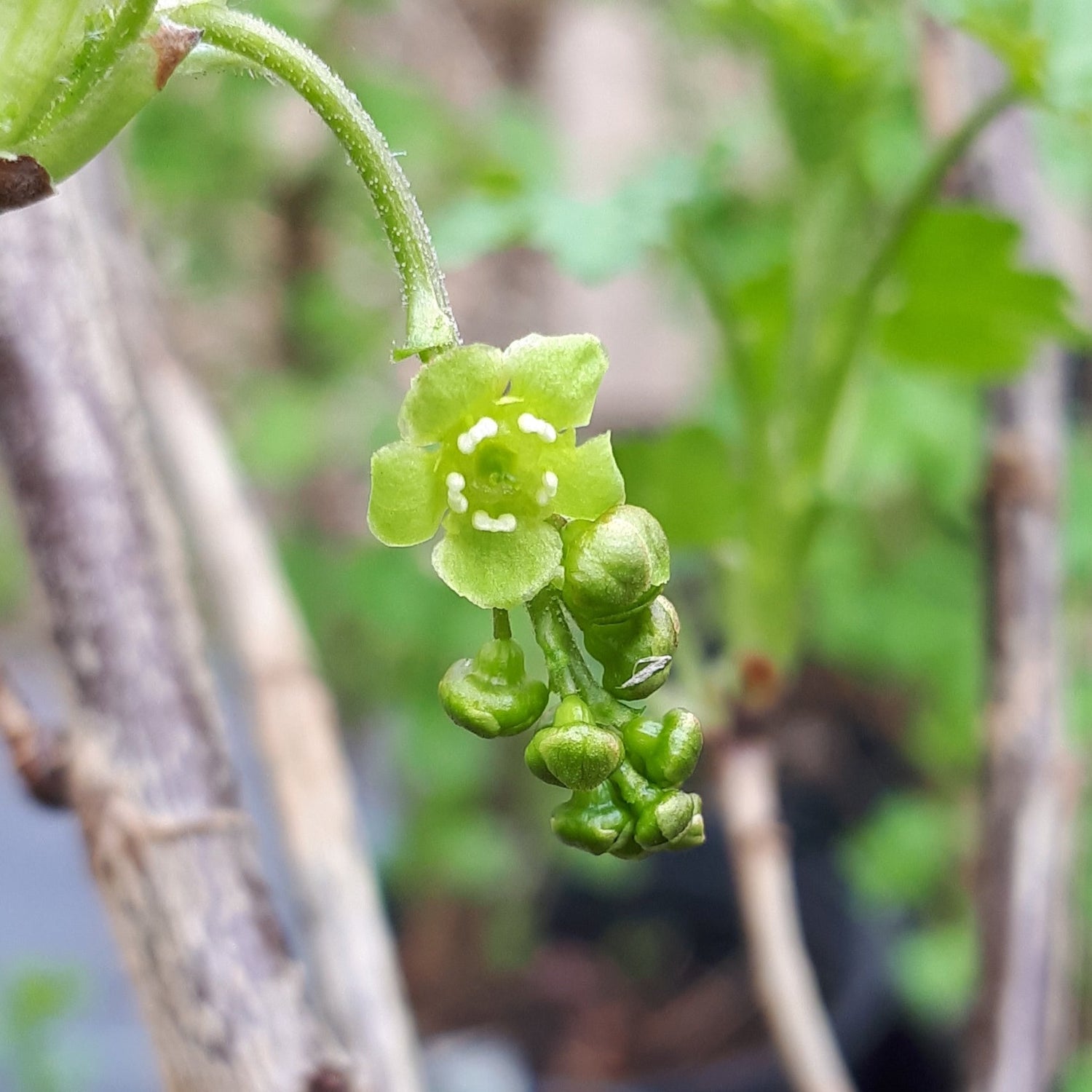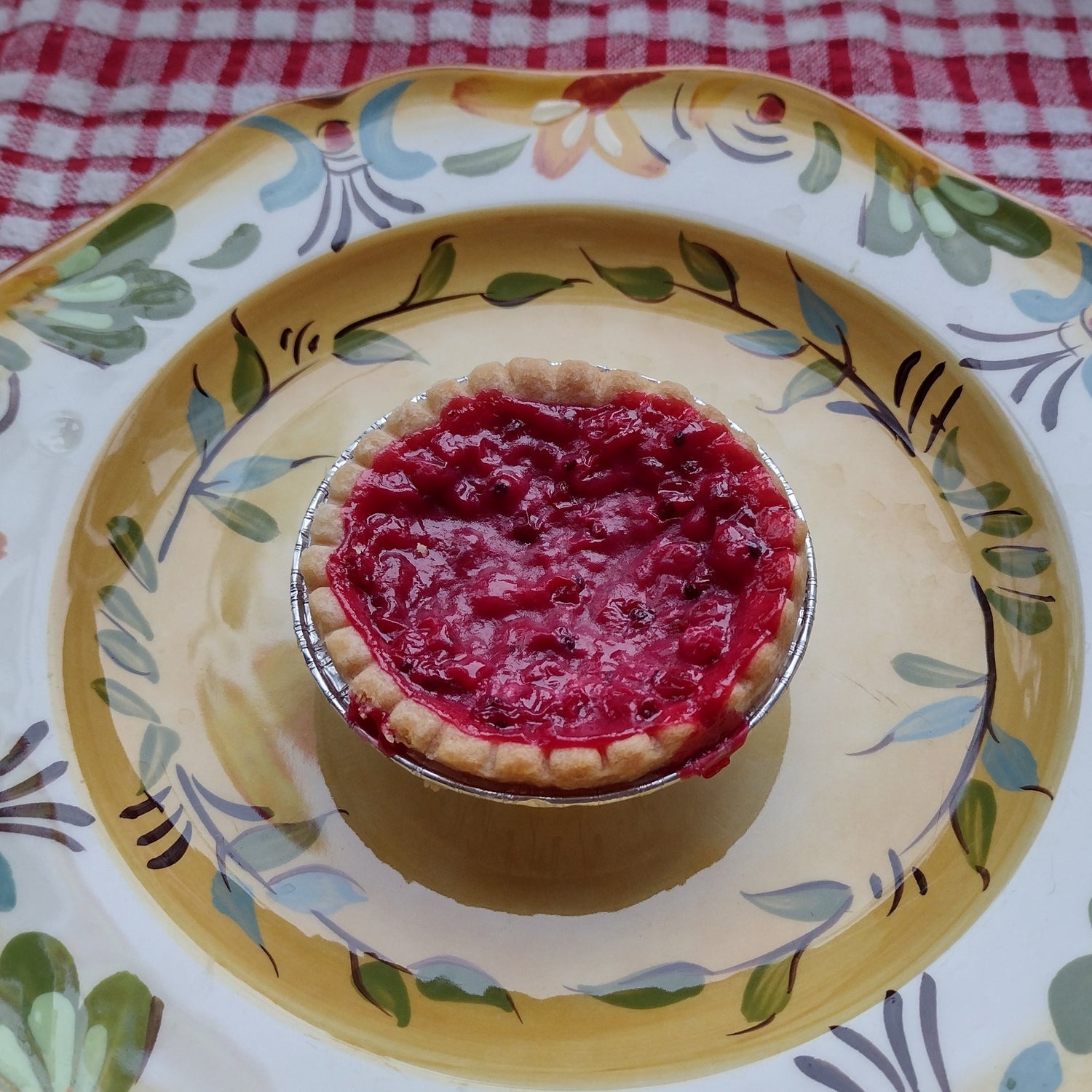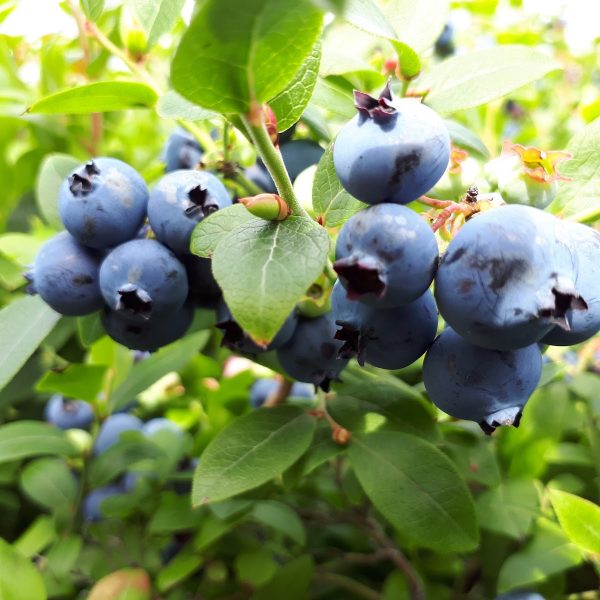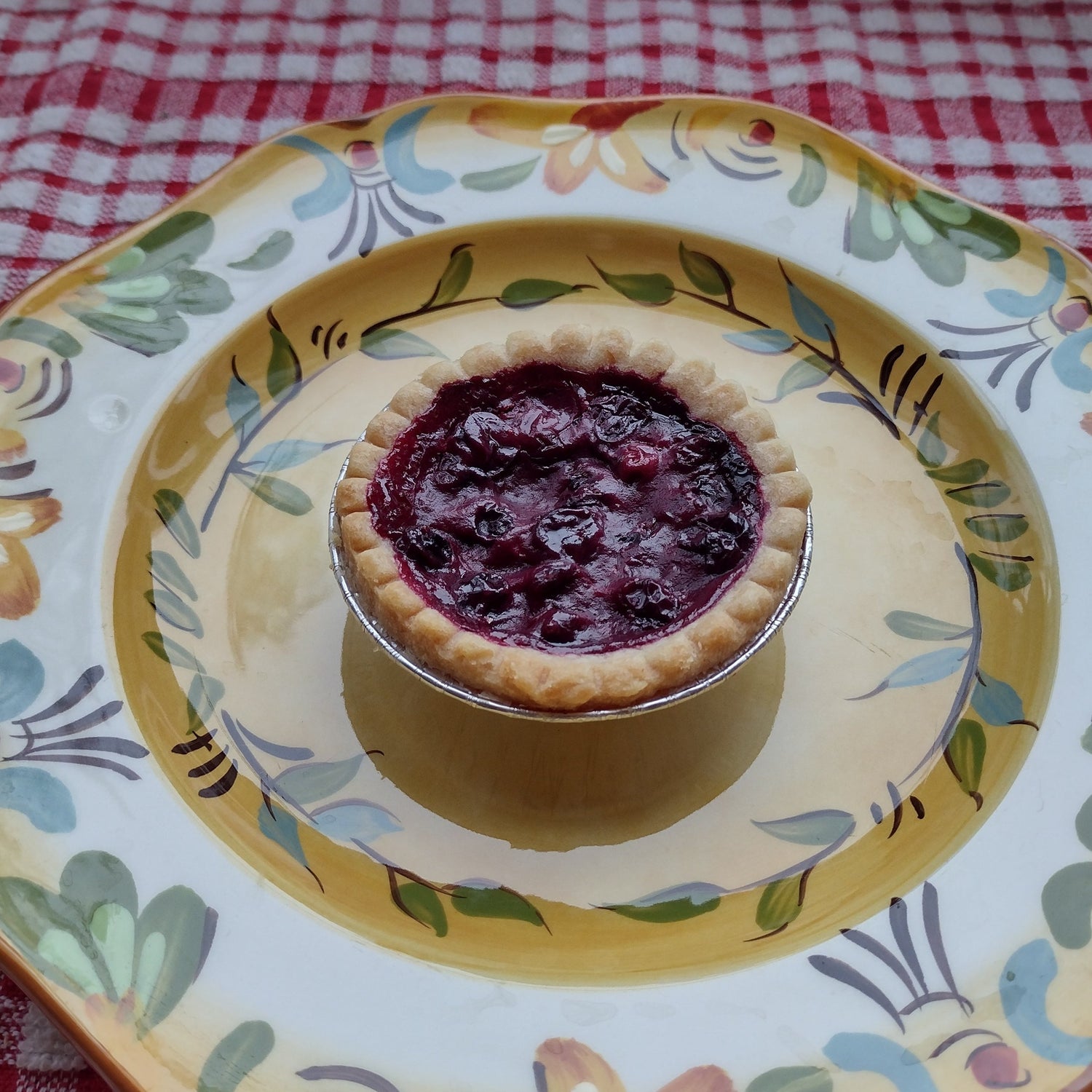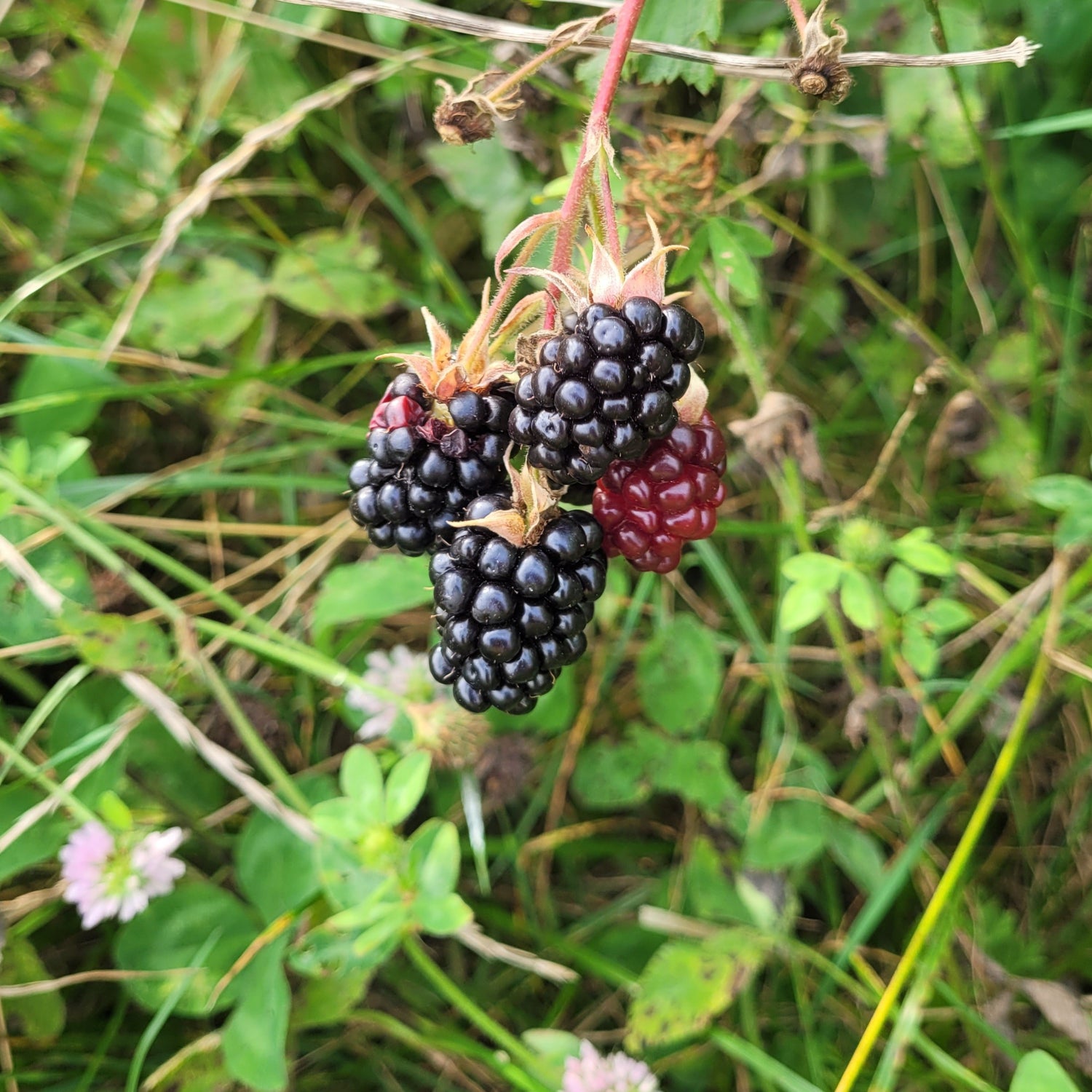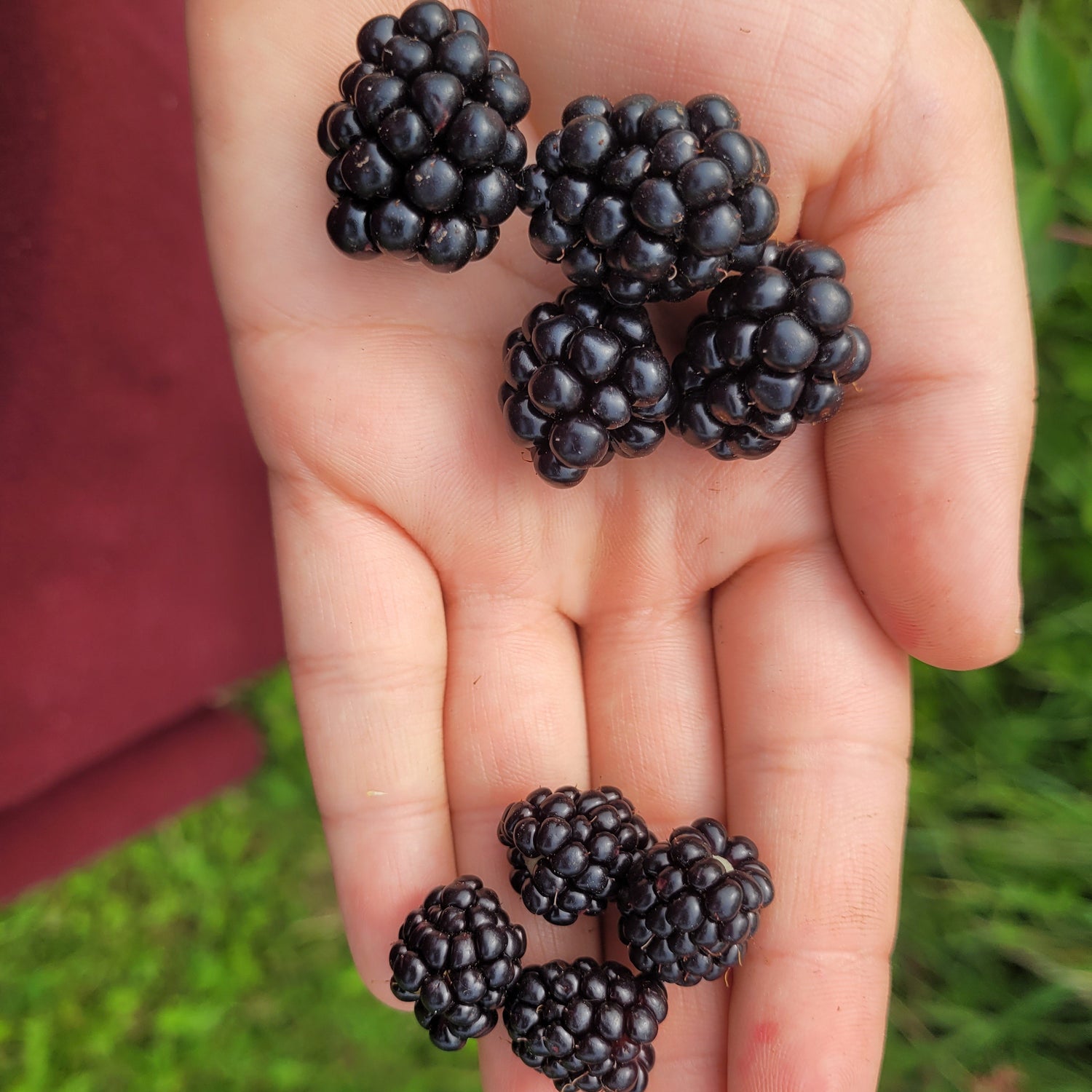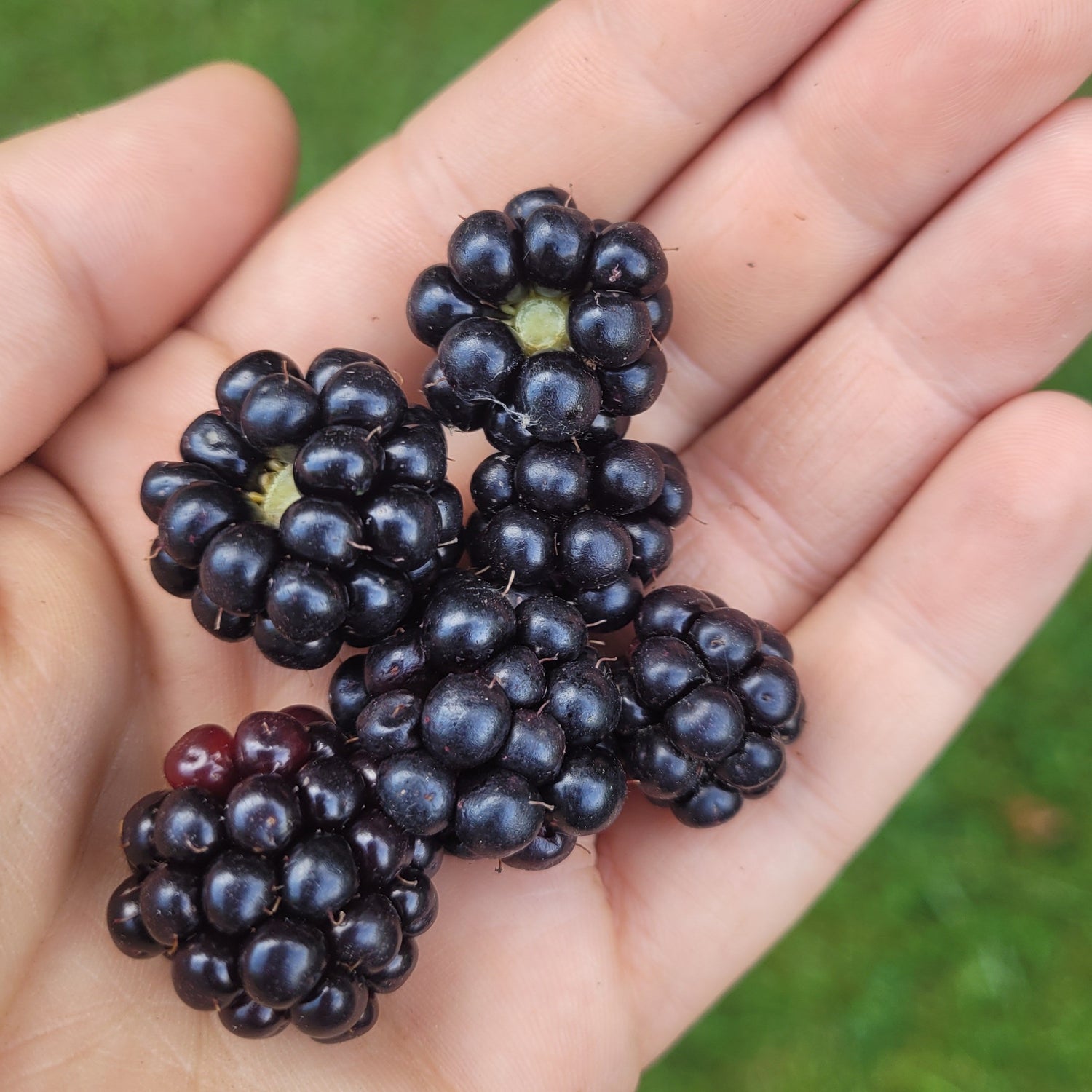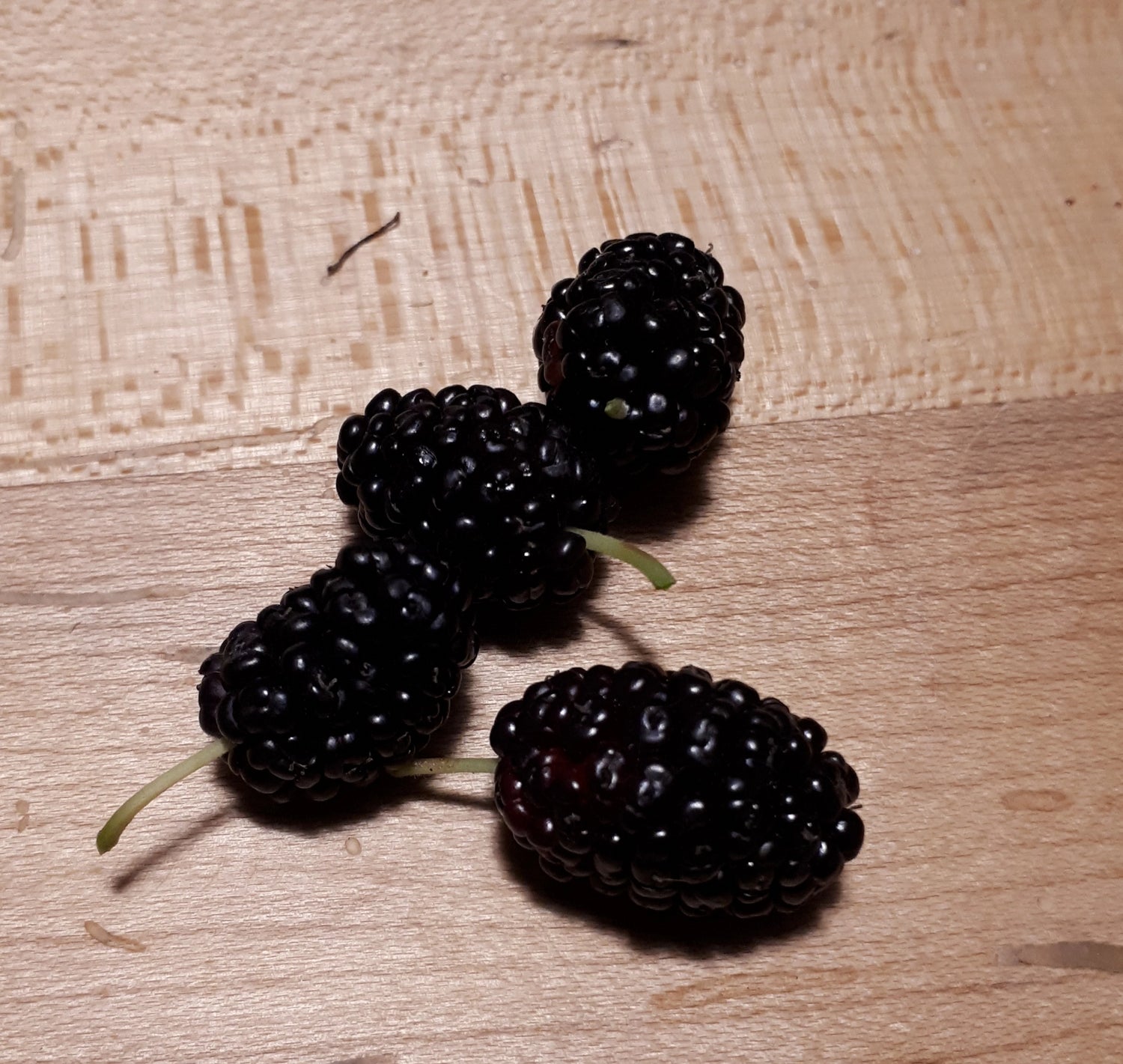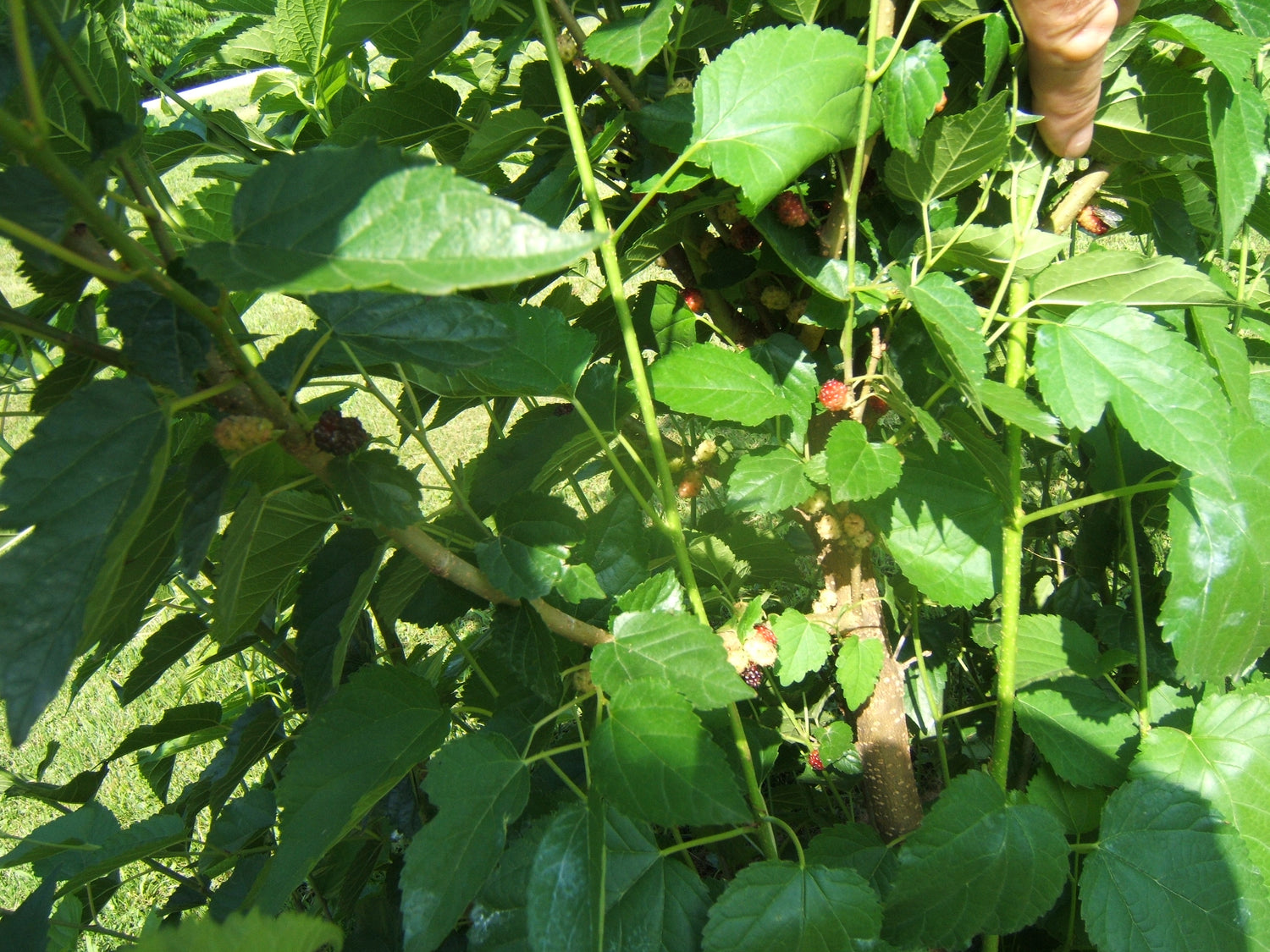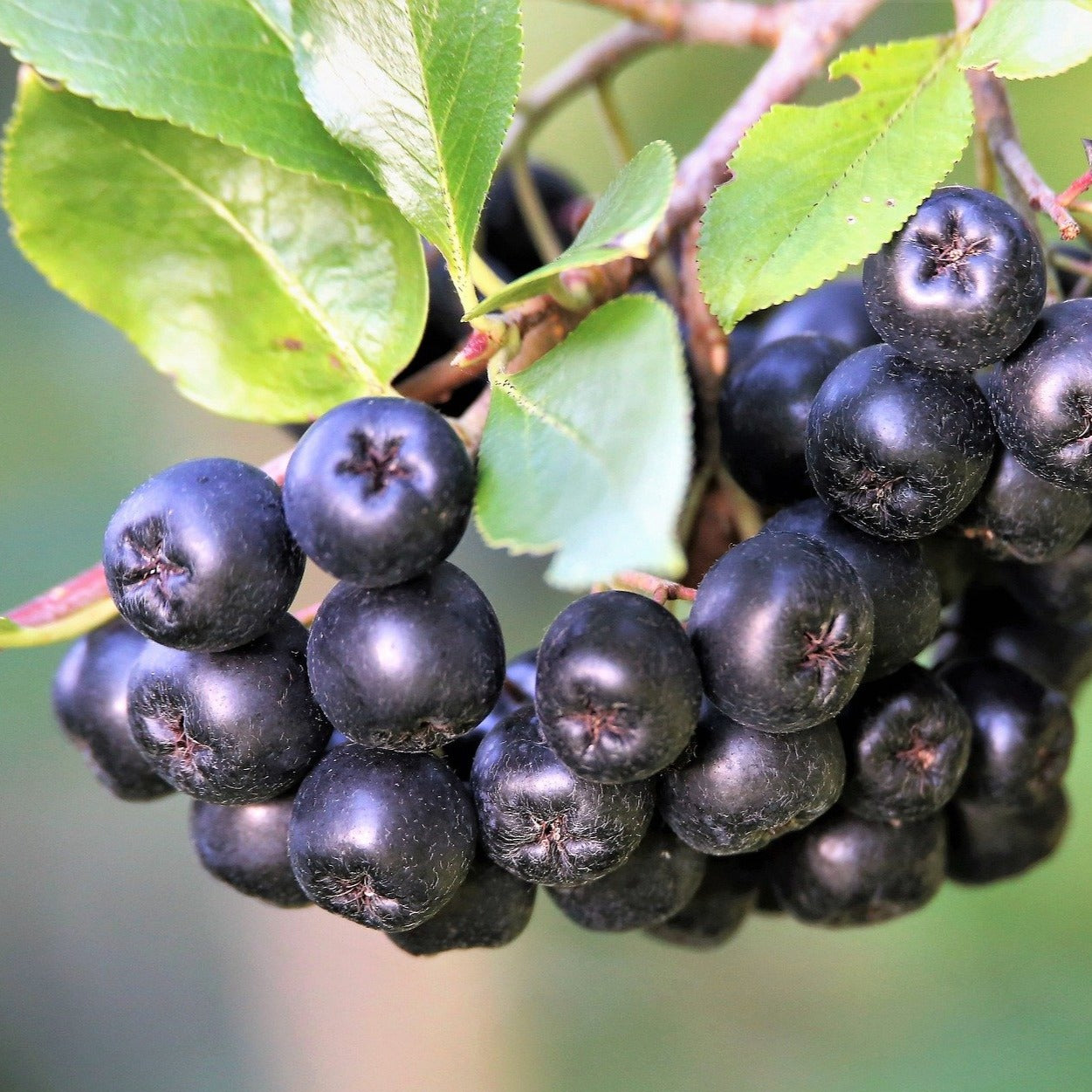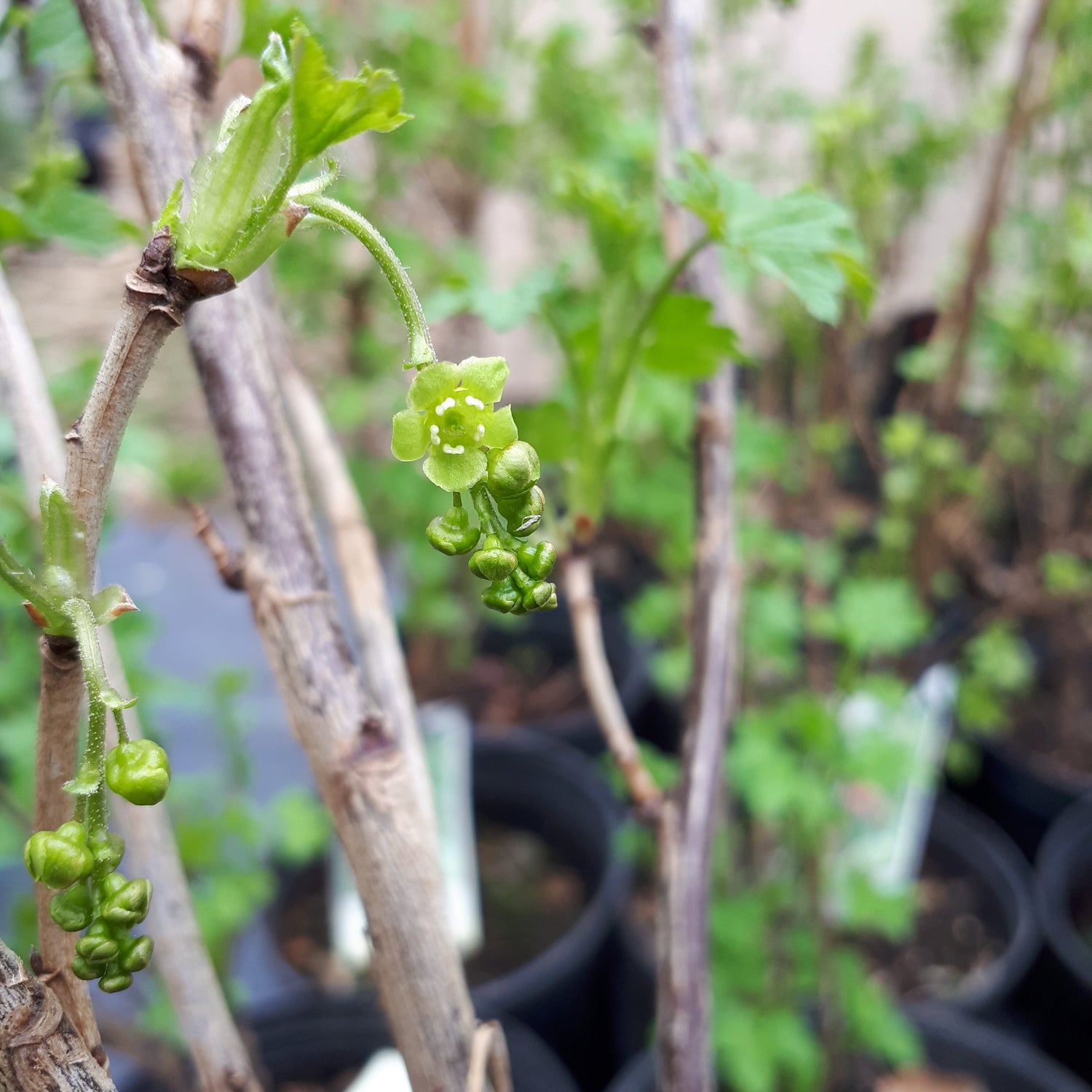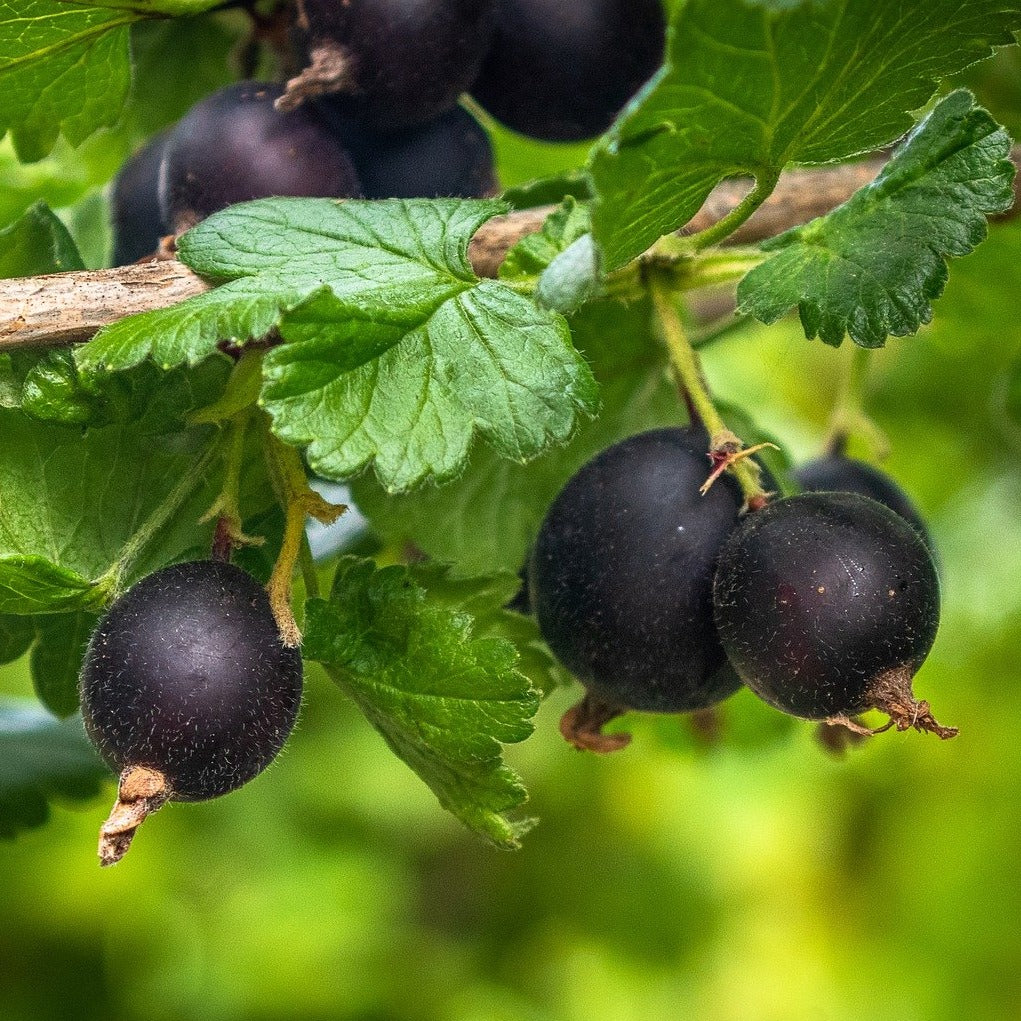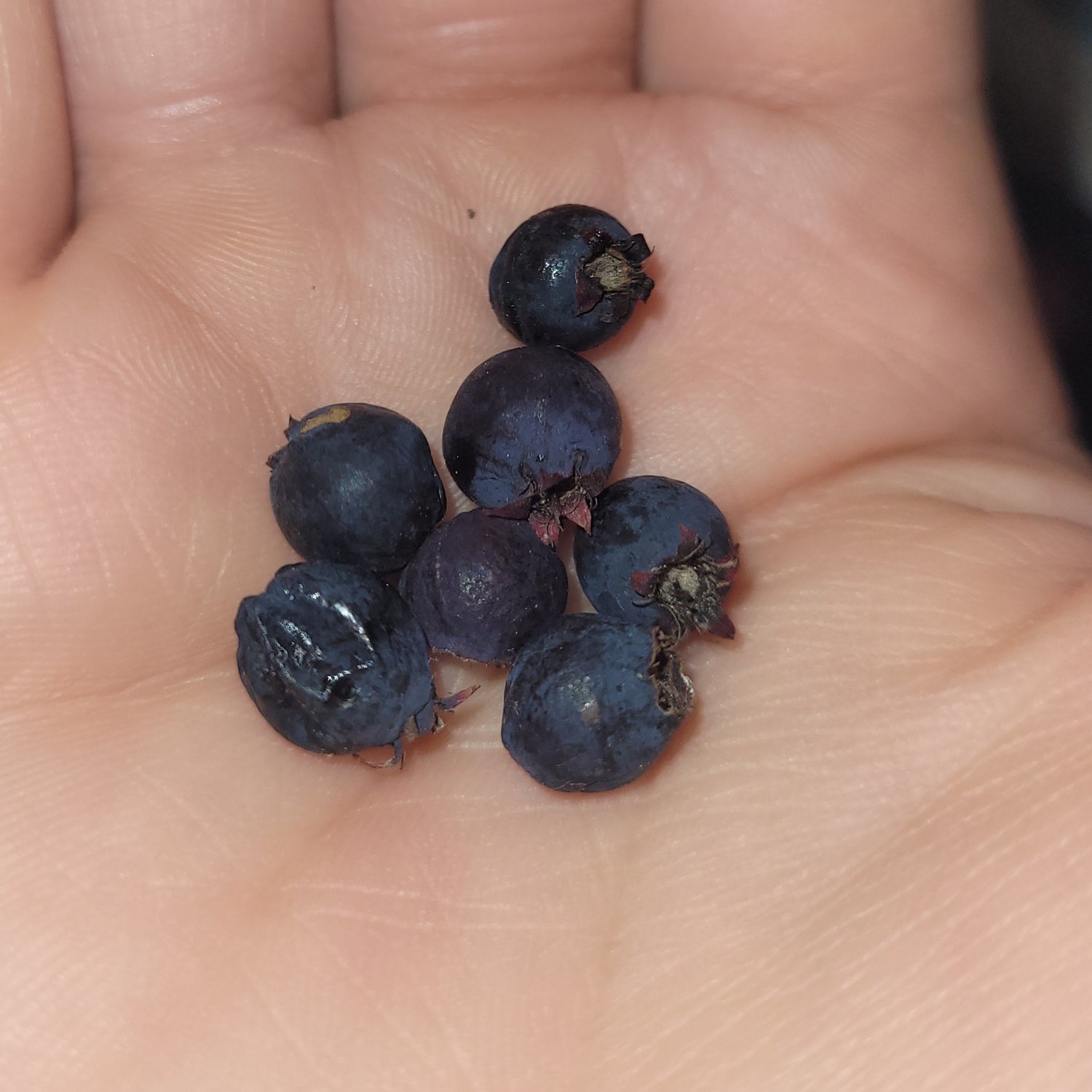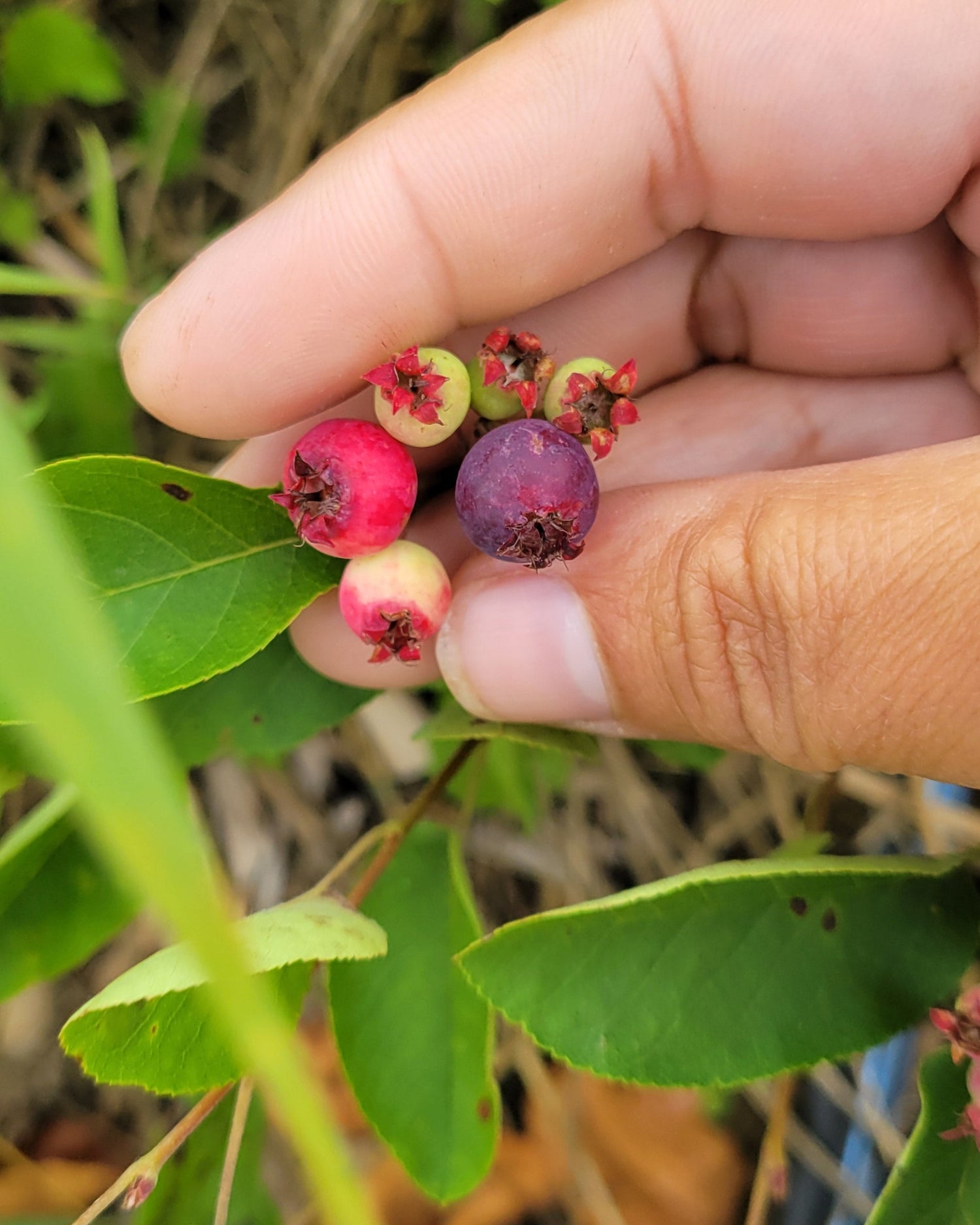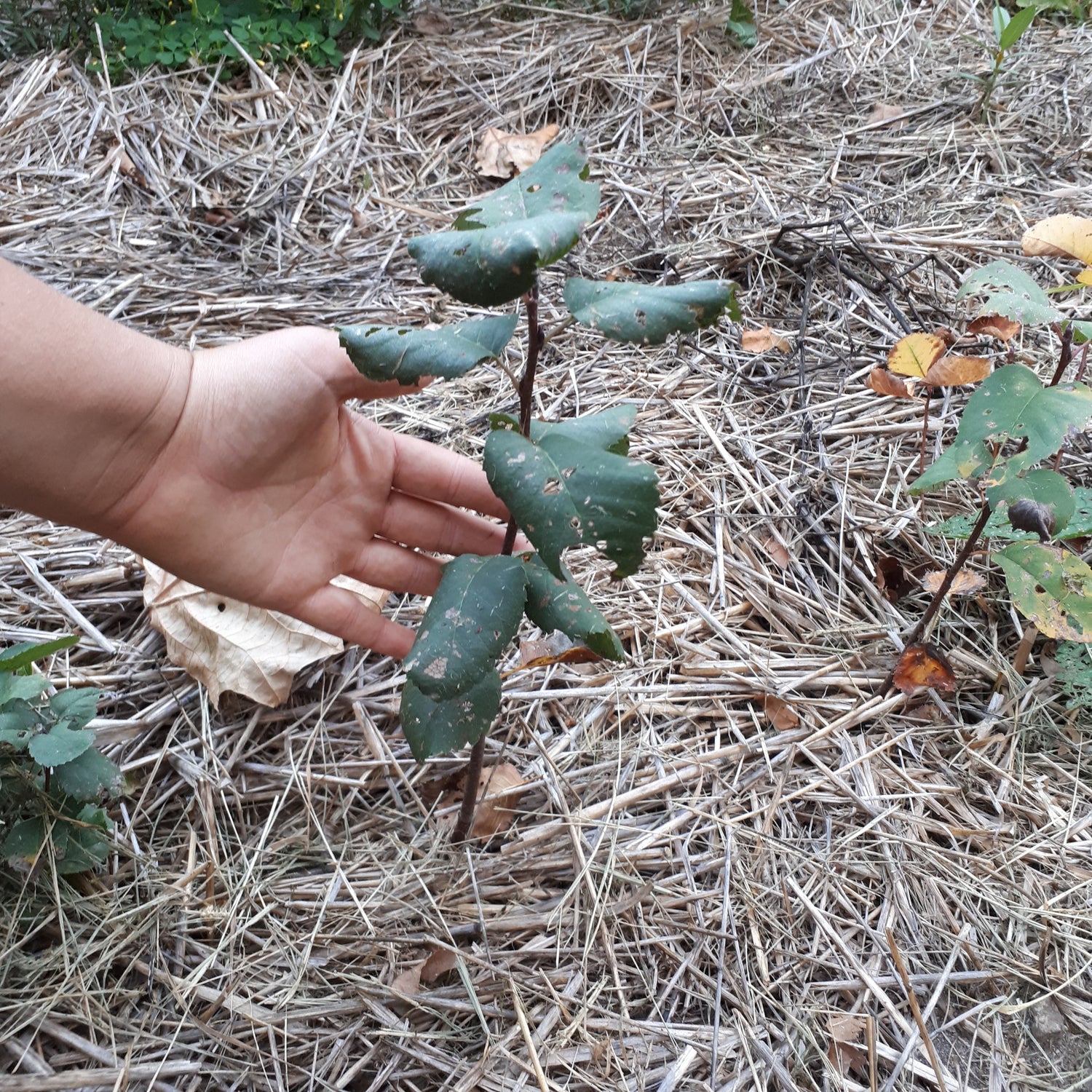Berries and Vines
Berries are a wonderful addition to the orchard, adding depth in many ways: enriching the ecosystem, lengthening the harvest window, bringing more flavours and nutrients into your kitchen. You can't go wrong with adding some of these wonderful options to your landscape (and palate)!
Collections
Sort by:
46 products
46 products
2025 Staff Favourite
Pink Champagne Currants are Amanda's favourite this year! She says these are "beautiful translucent pink currants that taste as lovely as they look!"
All Staff Favourites are 20% off. The Staff Favourite Discount cannot be combined with other quantity discounts.
Species: Ribes rubrum
History: Pink Champagne currants are a cross between red and white currants. Although the exact origin is unclear, this variety was listed in the catalogue of William Prince's nursery in New York as early as the 1800s.
Why We Grow It: Considered to be one of the best fresh eating currants, Pink Champagne produces beautiful translucent pink berries that have a sweet, delicate flavour. They are easy to grow and produce numerous clusters of hanging, pink berries.
2025 Staff Favourite
Scotia Elderberries are Jenni's favourite this year! In Jenni's opinion “this variety is sweeter and less astringent than others, and I love using it to make elderberry syrup for an immune system boost in the winter months.”
All Staff Favourites are 20% off. The Staff Favourite Discount cannot be combined with other quantity discounts.
Species: Sambucus canadensis
History: Scotia was developed at the Kentville AAFC Research and Development Centre in Nova Scotia. It is a seedling of another variety, Adams 2, and was released by the research station in 1960, alongside the variety Nova. It is grown commercially in Canada.
Why We Grow It: Scotia elderberries ripen early in the season and have the highest sugar content of any named cultivar- though also some of the smallest berries. They are great for a variety of uses such as making juice and wine, baked goods, and even tinctures. Eating the raw elderberries can cause adverse reactions so it is recommended that you cook them first!
Special Bulk Discount: Purchase multiples of this product & enjoy the savings!
Enjoy our bulk quantity discount (see below) and add to cart to see how much you save!
Species: Lycium barbarum
History: Goji berries are native to China where they are an important commercial crop. They spread to the UK in the 1700s where they have remained popular as hedgerows and have become increasingly common in North America due to the health benefits of the berries.
Why We Grow It: Goji berries a.k.a. wolf berries are well known in the health food industry for their high antioxidant levels. The plant grows prolifically, and must be trellised or grown against a wall due to it's weeping growth habit. The fruit itself is sweet, with a mild fruity flavour, however the seeds are a bit bitter and seem to sweeten after a mild frost later in the season. The fruit dries well, and makes for a unique tasting jam!
Species: Amelanchier alnifolia (aka Western Serviceberry)
History: Smokey (sometimes spelled Smoky) likely originated in Alberta. This productive variety was once the main cultivar grown in Canada commercially.
Why We Grow It: Smokey saskatoon berries are optimal for the fresh eating market with a mild sweet flavour. These berries are a great substitute for blueberries. Smokey is one of the best yielding varieties, and grows up to 12 feet tall. Saskatoons by nature are slow growing, and while they will bear fruit in 1-3 years, it can take up to 15 years for a full crop.
Photo by Cindy Malette from Burst
Species: Vitis labrusca x Vitis riparia x Vitis vinifera, and small amounts of other species of different Vitis from North America
History: Bred by Elmer Swenson in Wisconsin, Somerset is one of numerous varieties he created for growing in our cooler North American climates. This cultivar has become increasingly popular in recent years and has good potential for commercial growing. The variety was released in 2002.
Why We Grow It: One of the hardiest, highest quality seedless grape varieties out there, this is an excellent table grape: sweet, spicy, with strong notes of strawberry. The grapes have beautiful pink flushed skin and are most decadent if allowed to sit on a sunny window sill for a week or so after harvest. Although the fruit is on the smaller to medium end of the scale, the vines produce large, heavy clusters that more than compensate for the size of the individual grapes. The grapes have a firm texture with some crunch.
Species: Rubus parviflorus
History: Thimbleberries are a native plant closely related to raspberries and blackberries. Cultivated for edible, ornamental, and ecological reasons today, they have also historically been used by indigenous peoples as a source of food and medicine.
Why We Grow It: This is an excellent under-story plant that produces smaller, flatter berries than cultivated raspberries, but with a delicious sweet-tart flavour. Apparently young shoots can be harvested in spring, lightly peeled, and then boiled for an asparagus-like 'vegetable'- we haven't tried this yet, but would love to hear from you if you have! The thornless bush grows up to 7 feet tall, though can be kept smaller with pruning/trellising/tying down. The fruit grows best on 2-3 year old canes unlike raspberries, which makes this an ideal plant for living fences.
Species: Ribes nigrum
History: Titania black currant was developed by Pal Tamas in Sweden. It was bred as a cross between the varieties Consort, Kayaanin Musta, and Altaskaya Dessertnaya in 1969 and chosen for further evaluation in 1974. Since its release it has become one of the most popular currants in North America.
Why We Grow It: It is easy to see why Titania has become so popular. It produces large, juicy berries with a rich, mild flavour. It is also resistant to White Pine Blister Rust and mildew. The berries are great for a variety of uses, such as the black currant scones and black currant and blueberry tarts Steph made (see pictures)!
Species: Vaccinium angustifolium
History: Top Hat lowbush blueberry was released by the Michigan State University Agricultural Experiment Station some time before the mid to late 1970s.
Why We Grow It: This variety produces small berries with a rich sweet-tart flavour. It is a popular pick for bonsai and container gardening. Blueberries are great for baking, for example Steph made some wonderful black currant and blueberry tarts that are pictured here!
Species: Aronia melanocarpa
History: Viking was developed in Finland around the 1980s, likely looking to increase productivity. They succeeded and Viking is now the most productive of all aronia cultivars.
Why We Grow It: With slightly larger than average berries, very good flavour, and the best productivity of all aronia berries, Viking is a hard variety to turn down. Like other aronia berries, they can be a bit tart for fresh eating but are great when used for cooking, baking, wines, jams, etc. While the berries ripen in August, they can hang onto the bush for a couple months and tend to sweeten over time.
Species: Ribes rubrum
History: Developed in Holland, White Pearl currants, like all white currants, are actually an albino mutation of red currants. This variety has been popular in Europe for quite some time, although aside from its place of origin it appears there is little information on how it came to be.
Why We Grow It: These delicate translucent berries are white with a pinkish-gold hue, making them delightful to see growing in the garden. They have sweet and mild flavour that is slightly floral. The plant itself is quite cold hardy and bears prolific crops.
Species: Vaccinium angustifolium
History: BB4 lowbush blueberry was discovered growing wild in a bush near a tissue culture lab near the small municipality of L'Ascension-de-Notre-Seigneur in the Saguenay-Lac-Saint-Jean region of Quebec. Impressed with the quality and flavour, the lab decided to propagate these wild blueberries.
Why We Grow It: BB4 produces medium to large powder-blue berries, with a tasty, sweet flavour. The berries grow in nice clusters, making picking easy. Blueberries are great for baking, for example Steph made some wonderful black currant and blueberry tarts that are pictured here!
Species: Ribes rubrum
History: These red currants come from the Becker family homestead near Wellesley, Ontario where we are located. This is a great way to try something truly local!
Why We Grow It: In our experience, Becker red currants are reliable and productive. The fruit produced by Becker red currants are larger than those produced by Red Lake and make a wonderful juice. They can also be used for cooking and baking, such as the tarts made by Steph that are pictured here!
Species: Vaccinium angustifolium
History: Brunswick lowbush blueberry is the second lowbush variety developed at the AAFC Kentville Research and Development Centre in Nova Scotia. It was discovered growing wild on a blueberry farm owned by Shepoddy Blueberry and Lumber Co. in New Brunswick and was selected in 1965 for further testing. Proving to be an excellent variety that grows well and is relatively disease-resistant, it was named for its province of origin and released in 1977.
Why We Grow It: Brunswick produces firm, medium-sized dark blue berries, bursting with sweet flavour. These lowbush blueberries grow into a compact bush, with glossy dark green foliage that turns a lovely red in autumn. Blueberries are great for baking, for example Steph made some wonderful black currant and blueberry tarts that are pictured here!
Species: Rubus sp
History: Chester Thornless was created and released as a collaboration between the Agricultural Research Service, USDA, Illinois Agricultural Experiment Station, Ohio Agricultural Research and Development Station, and Maryland Agricultural Experiment Station. It was first bred in Illinois in 1968 and was selected for its thornless nature and cold hardiness. It was later released in 1985.
Why We Grow It: Chester Thornless is easy to grow and rewarding. It produces a reliable bounty of firm, sweet, juicy blackberries that are great for a wide variety of uses.
Pictured on the left: top: Chester, bottom: Illini Hardy
Species: Morus nigra
History: While the origins of the cultivar itself are unclear, Dwarf Everbearing mulberries can trace their history back to Mesopotamia and Persia where it is believed that Morus nigra originated. It can now be found naturalized in parts of Europe, Asia, and the Middle East where it has been cultivated for its edible properties. As a dwarf variety, Dwarf Everbearing is popular in gardens.
Why We Grow It: Soft and sweet with a hint of musk, it is hard to turn down fresh mulberries! In the right climate, Dwarf Everbearing will cycle in and out of fruiting for 10-12 weeks which gives you even more time to enjoy this lovely treat. It is also perfect for container growing, making a lovely patio plant in the summer and houseplant in the winter when pruned down to 4ft (for optimal fruiting).
Species: Aronia melanocarpa
History: Galicjanka was developed in Poland where Aronia berries are a common agricultural crop. It is one of the most popular varieties grown there due to its suitability for commercial plantations.
Why We Grow It: This variety produces large berries with good flavour. While the berries ripen in August, they can hang onto the bush for a couple months and tend to sweeten over time. Despite its popularity in Poland, it is unfortunately not very common in North America.
Species: Ribes nigrum
History: This black currant is a family classic that was grown by Ken's great-grandmother.
Why We Grow It: Grandma Ethel produces large fruit with a slightly stronger flavour than Titania and an unusual sweetness for a currant. The berries make a very tasty juice - the recipe can be found further below!
A note on the "Grandma" Series: Inspired by this modest currants' success here at the nursery, we decided to curate our own repertoire of family favourites! Check out our tried-n-true gooseberries, rhubarb and raspberries.
Species: Viburnum trilobum
History: Highbush Cranberry is actually a viburnum and not a cranberry, despite its name. It earned its name due to the resemblance of the berries to cranberries in appearance and flavour. This shrub is native across southern Canada and and the northeastern US, and in sporadic locations in the prairies and BC. The berries have traditionally been used by indigenous peoples and European colonizers alike.
Why We Grow It: Fans of cranberries will enjoy this native plant! The bright red berries are high in vitamin C and can be eaten fresh, although like regular cranberries are best when made into sauces and preserves. They do contain a fairly large pit that has to be removed beforehand though! The shrub itself gets about 4m tall and has ornamental appeal with its showy white 'flowers' (they are actually bracts surrounding the smaller clusters of flowers within).
2025 Staff Favourite
Jostaberries are Wayne's favourite this year! He enjoys them because "they have the best qualities of both black currants and gooseberries."
All Staff Favourites are 20% off. The Staff Favourite Discount cannot be combined with other quantity discounts.
Species: Ribes x nidigrolaria, a cross between Ribes nigrum (black currants), Ribes divaracitum (black gooseberries), and Ribes uva-crispa (European gooseberries)
History: Jostaberries were created in West Germany in 1955 by Dr. Rudolph Bauer, although attempts to cross these three plants had begun as early as 1883 without success. They were eventually released to the public in 1977.
Why We Grow It: Jostaberries are a unique cross between three plants: black currants, black gooseberries, and European gooseberries. The berries taste like gooseberries at first and transition to a black currant taste as they ripen and darken.
Species: Amelanchier alnifolia (aka Western Serviceberry)
History: Northline was developed by John Wallace at Beaverlodge Nursery in Beaverlodge, Alberta during the 1950s. Selected for its large berries and good flavour, Northline was later introduced in 1960.
Why We Grow It: Northline's large, sweet purpley-blue berries are excellent enjoyed fresh! Northline grows in an upright fashion and reaches about 2.5m tall, this making for an ideal u-pick bush. The fragrant showy flowers add aesthetic charm to the bush, along with the deep green foliage which turns fiery orange in the fall. Saskatoons by nature are slow growing, and while they will bear fruit in 3-5 years, it can take up to 15 years for a full crop.
